Full text
PDF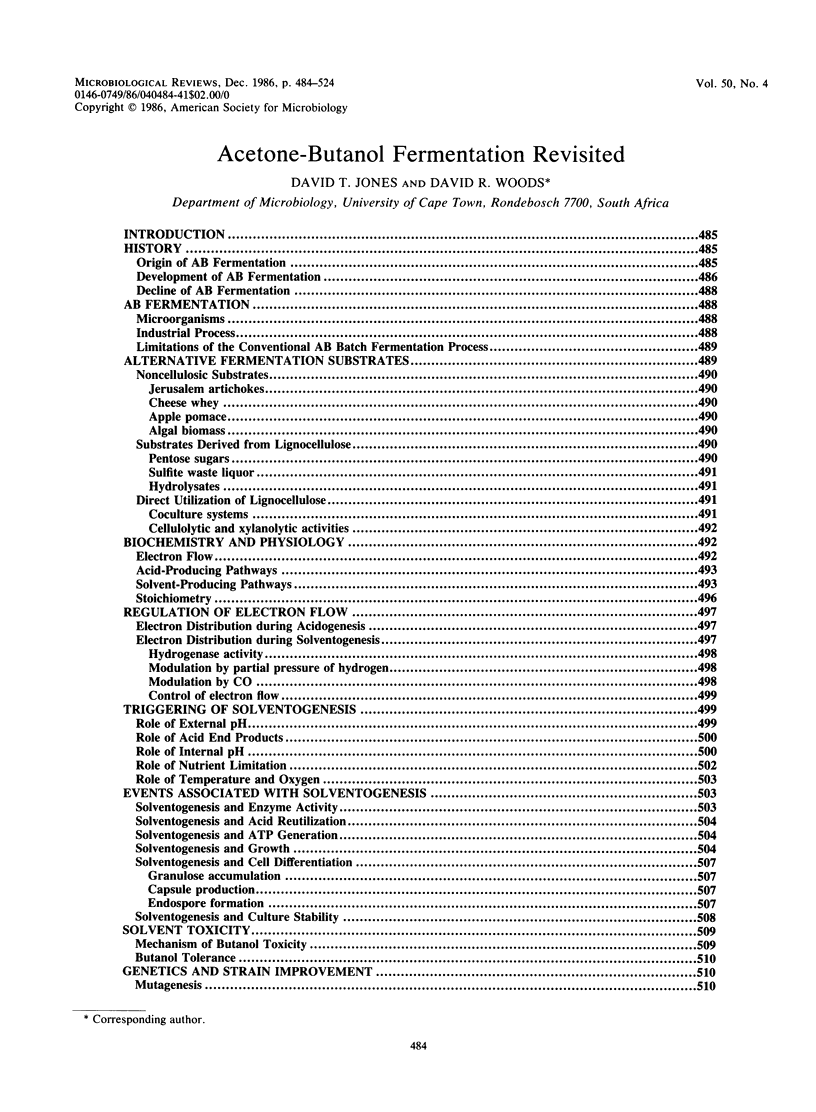
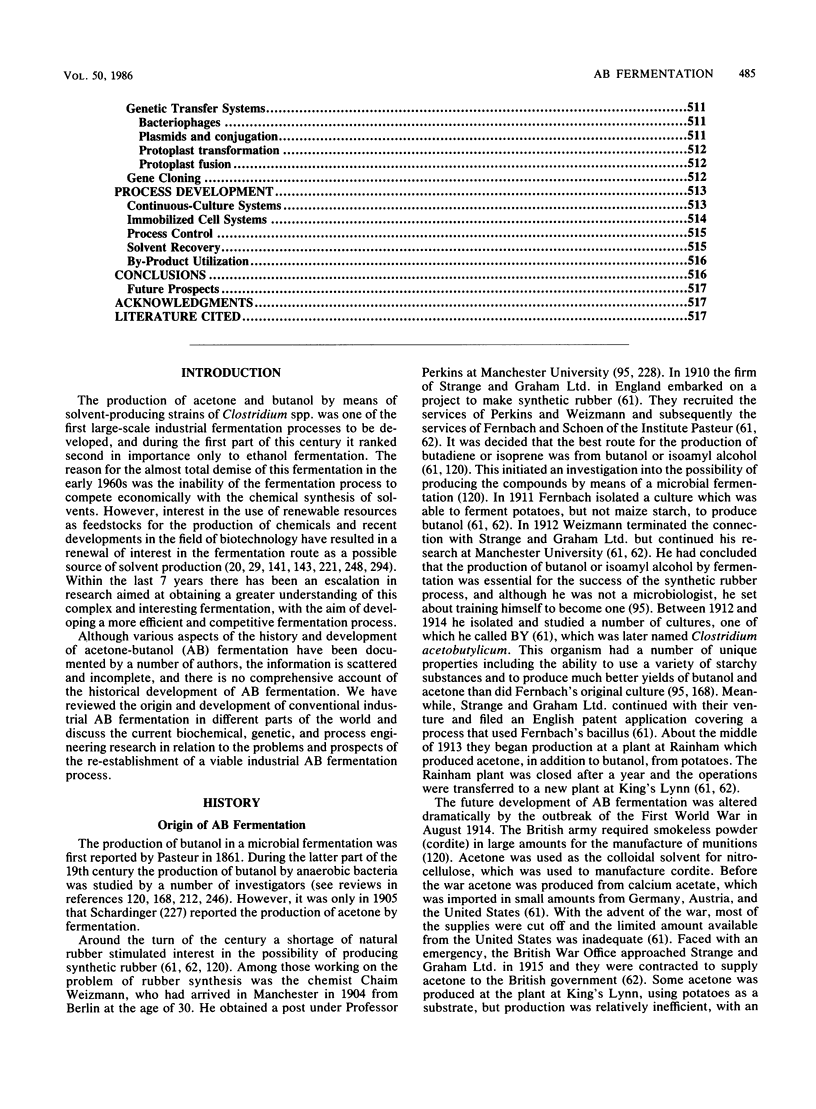
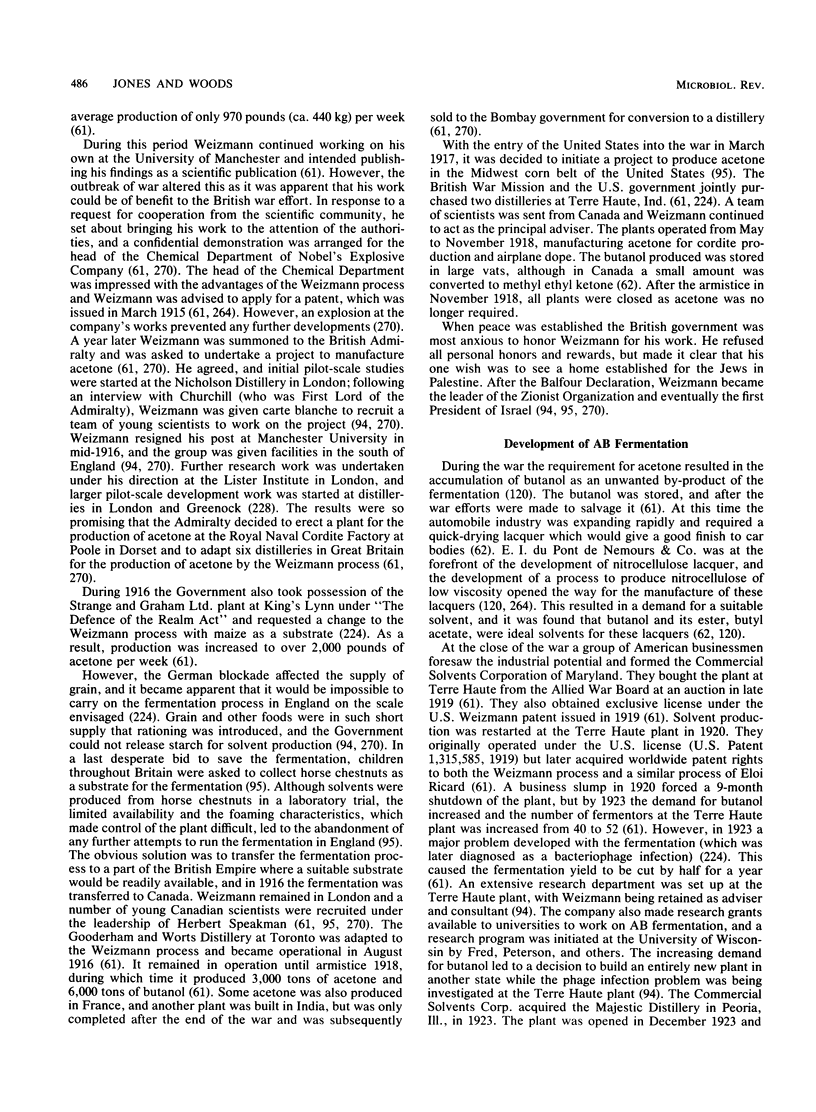
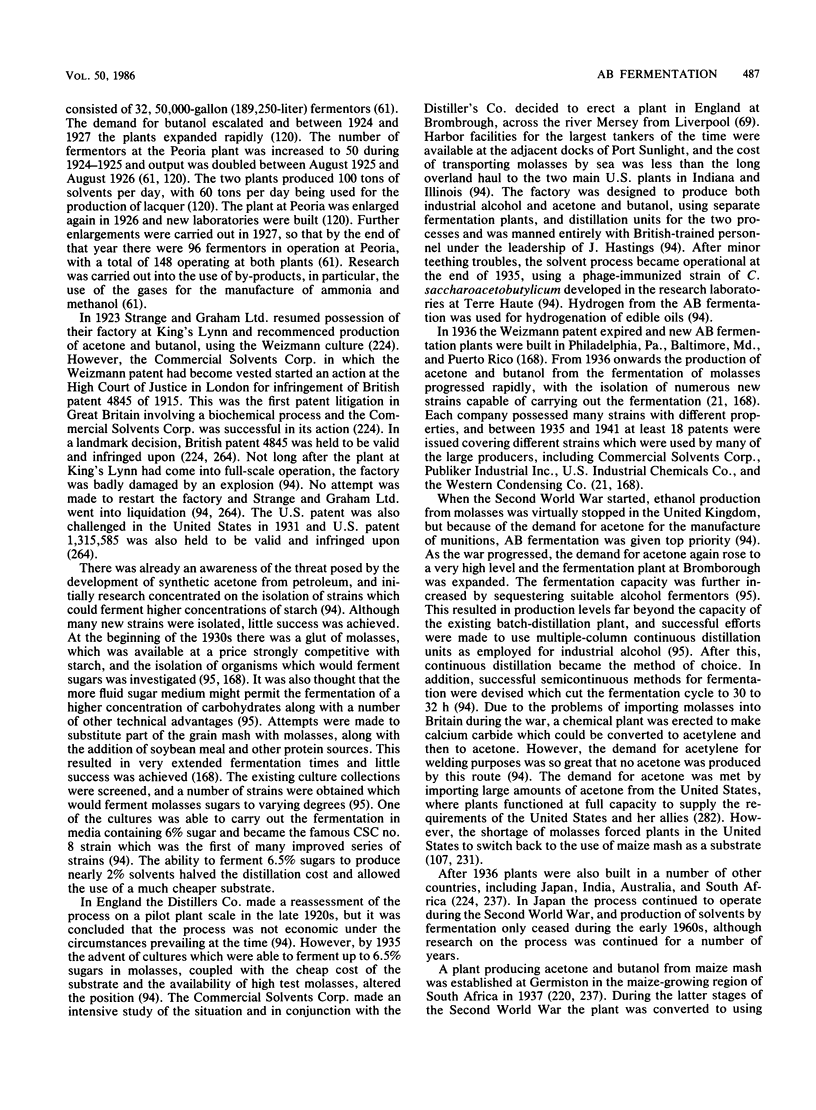
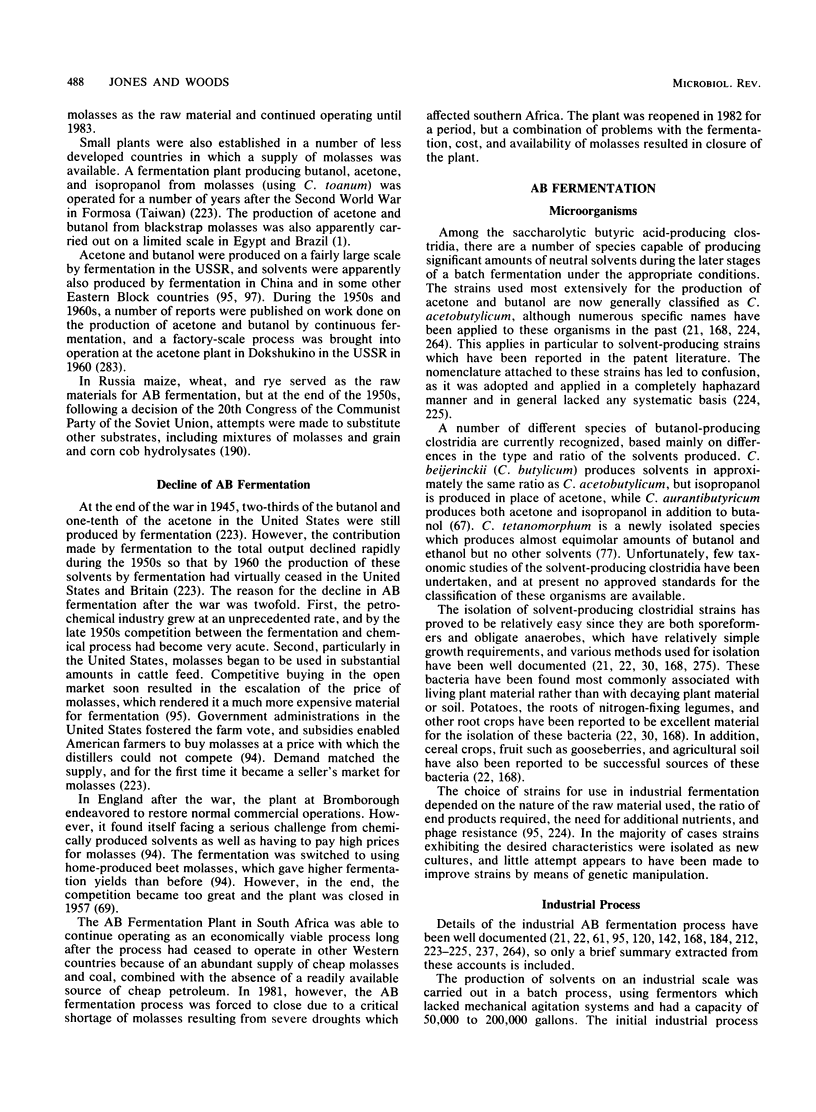
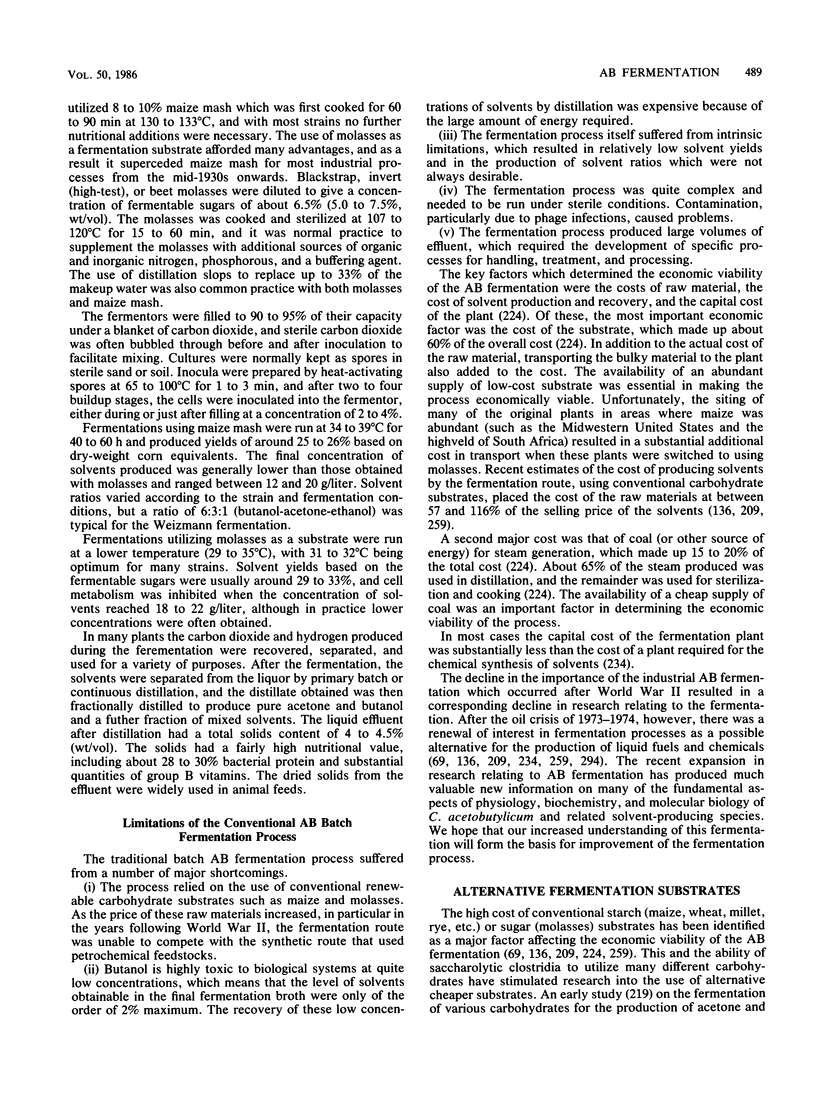
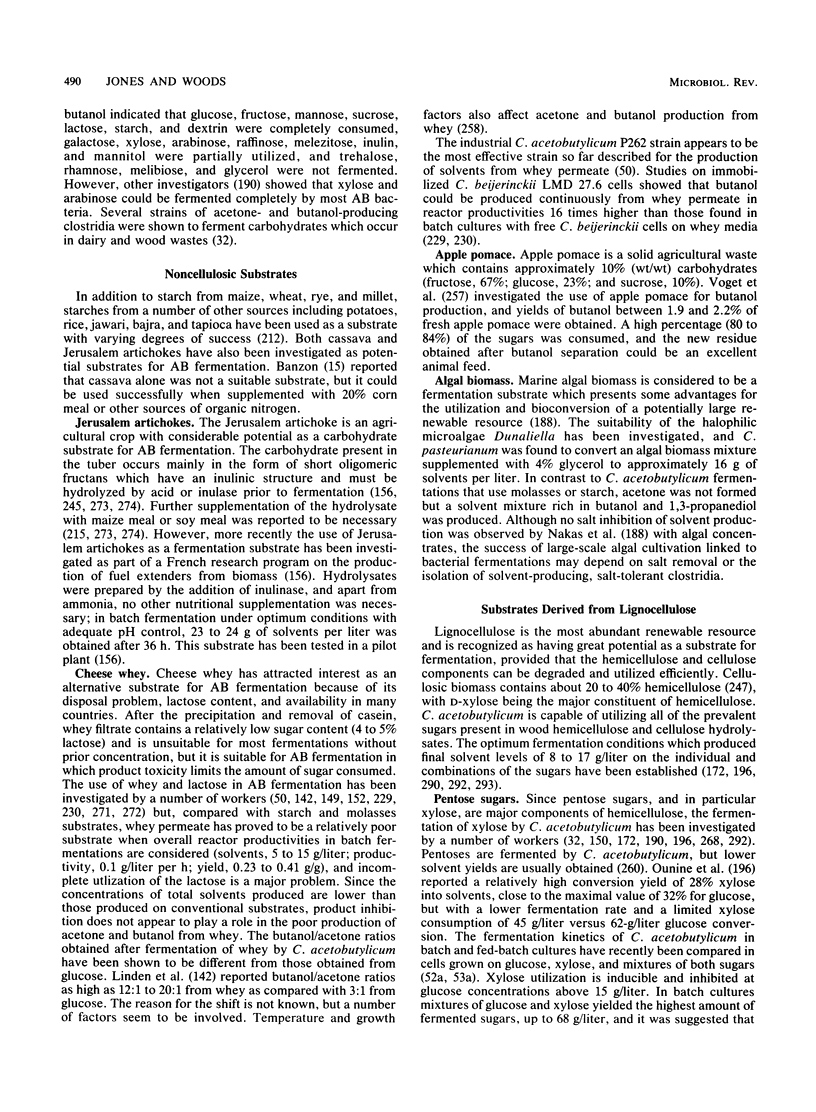
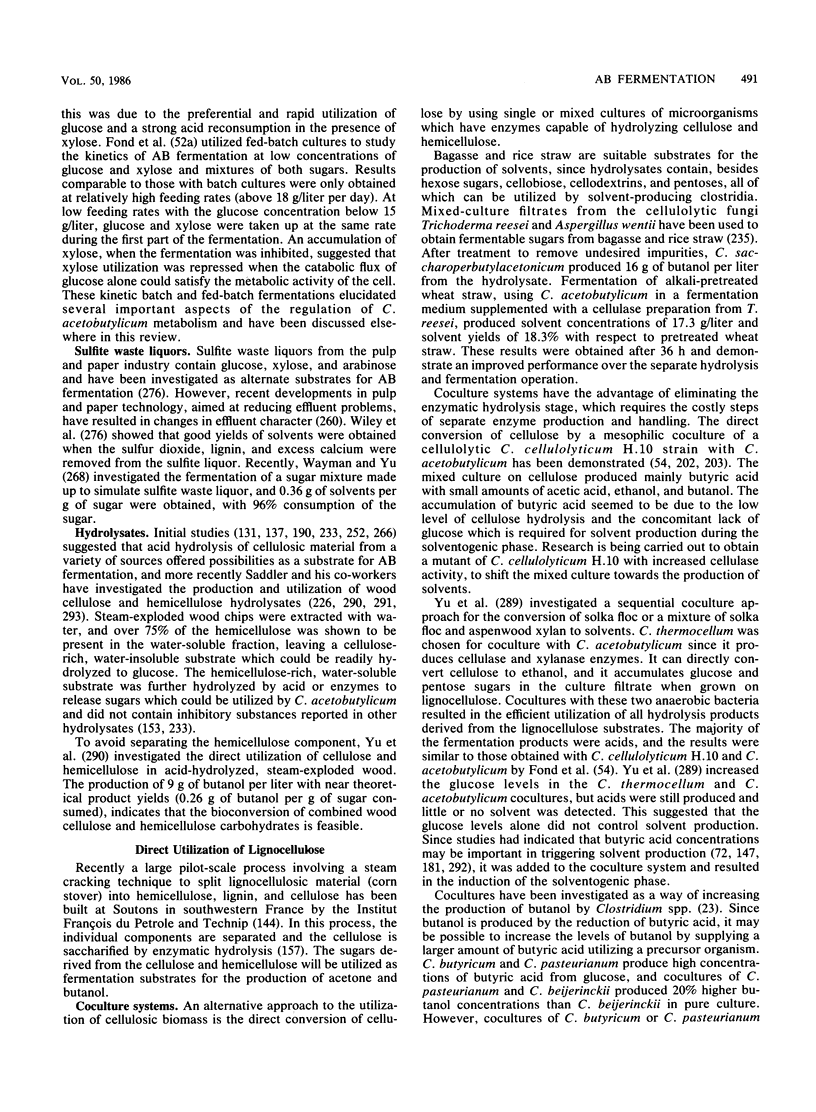
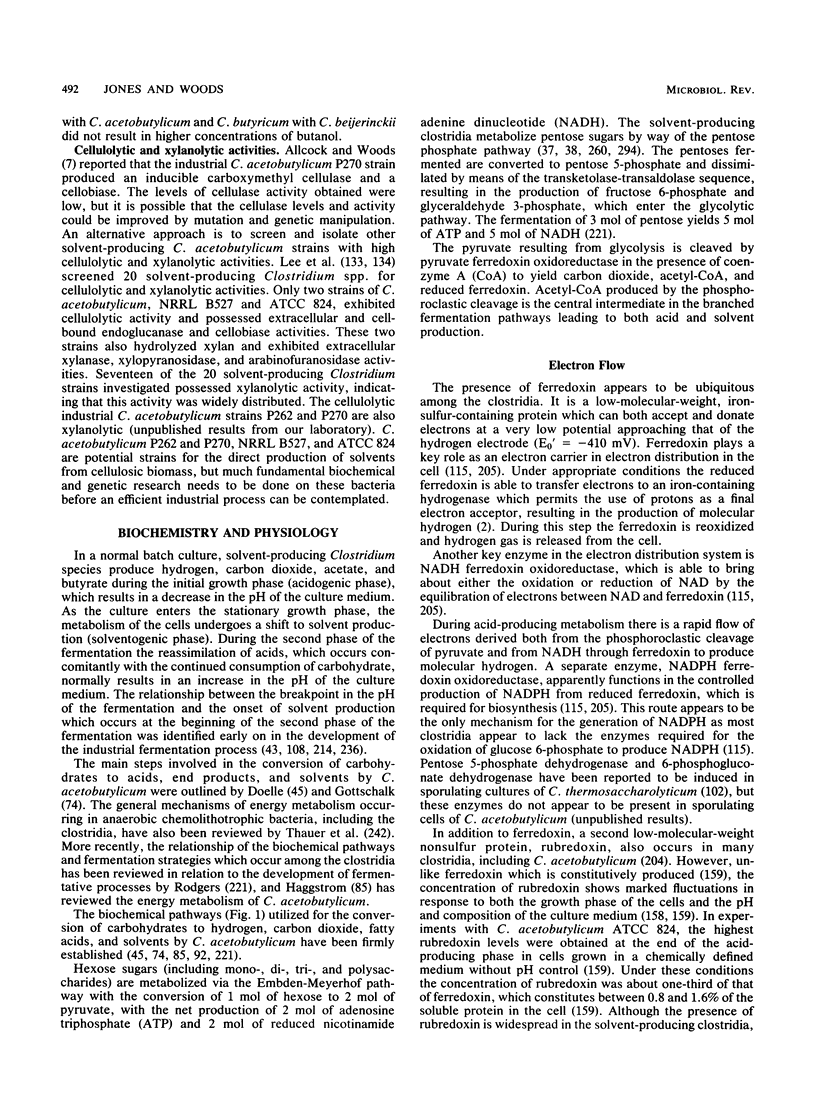
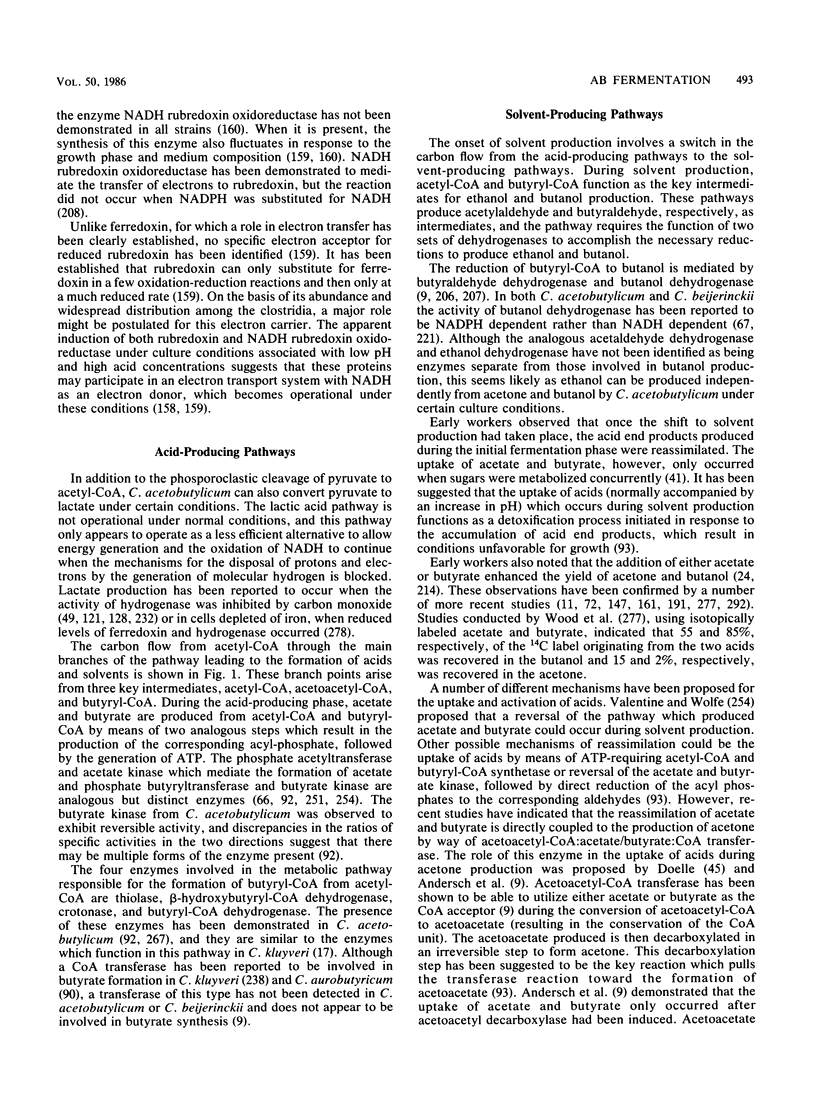
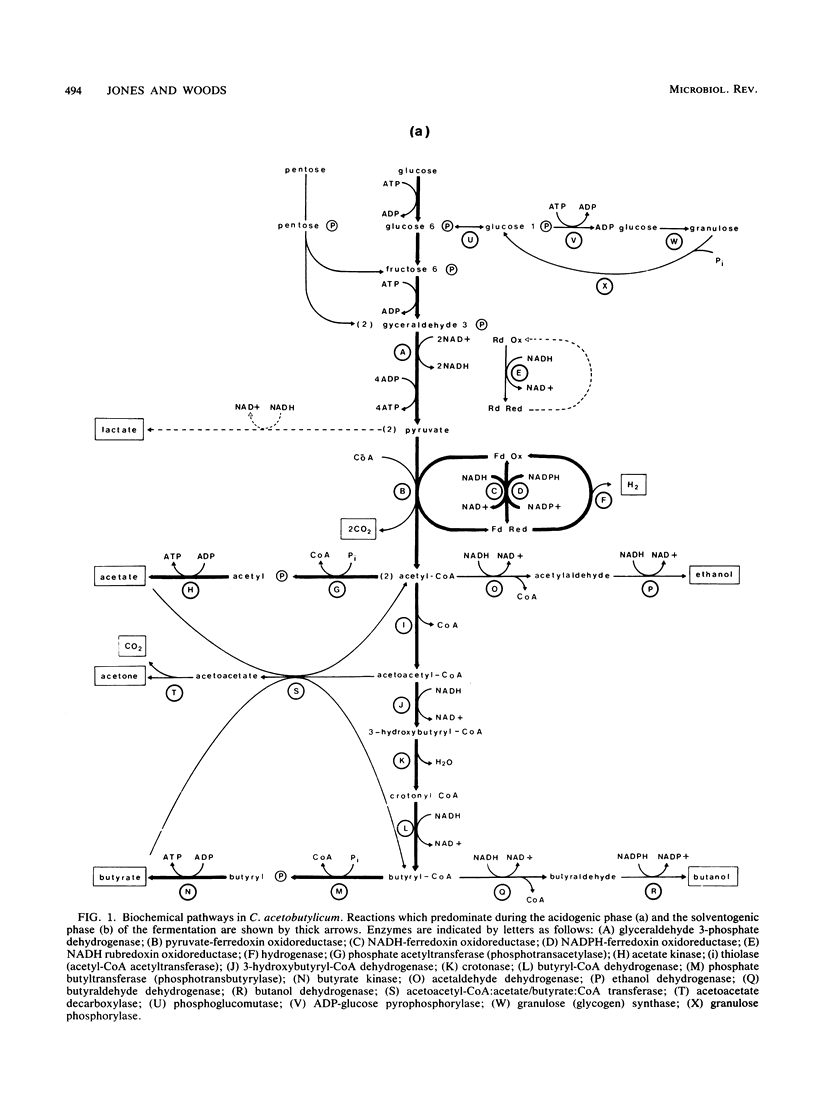
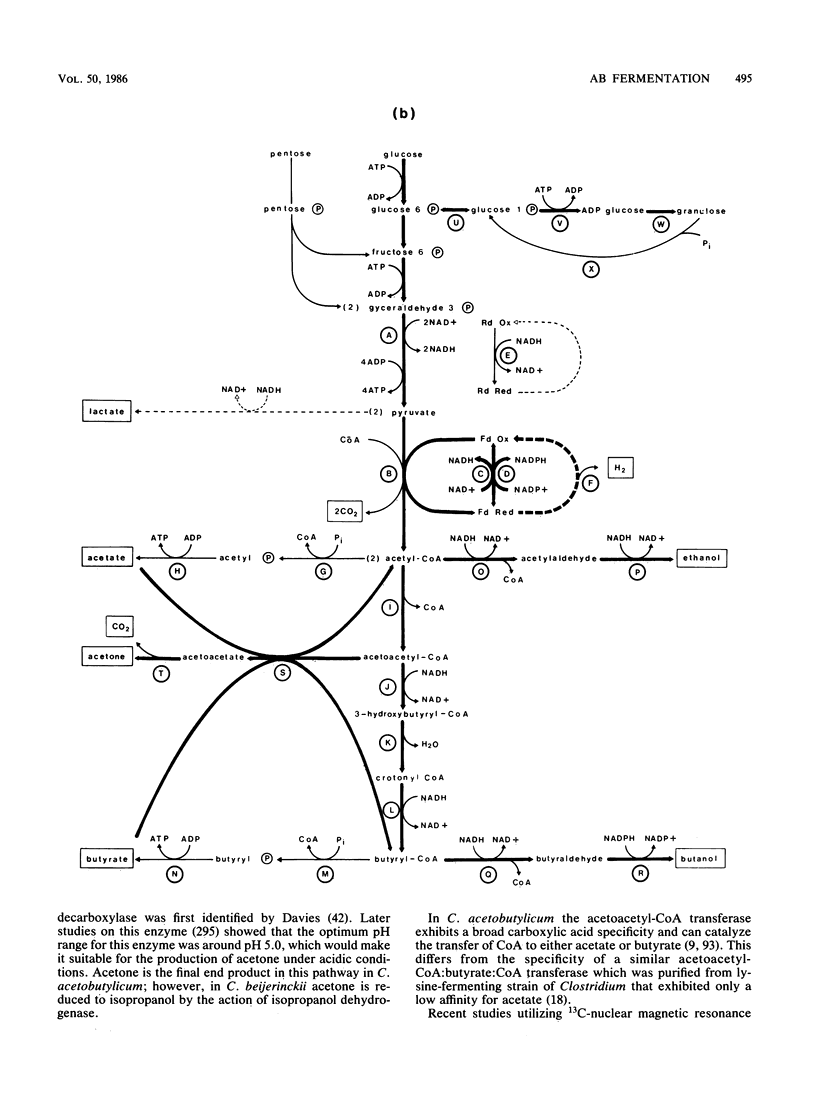
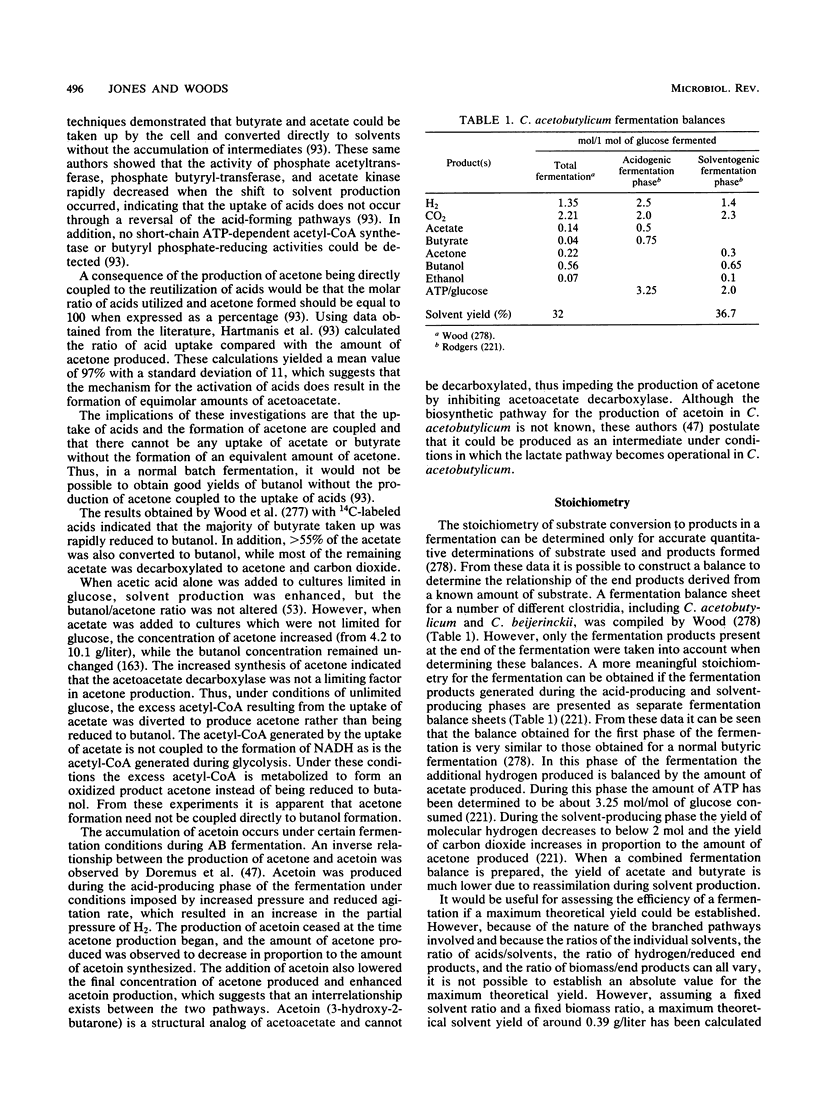
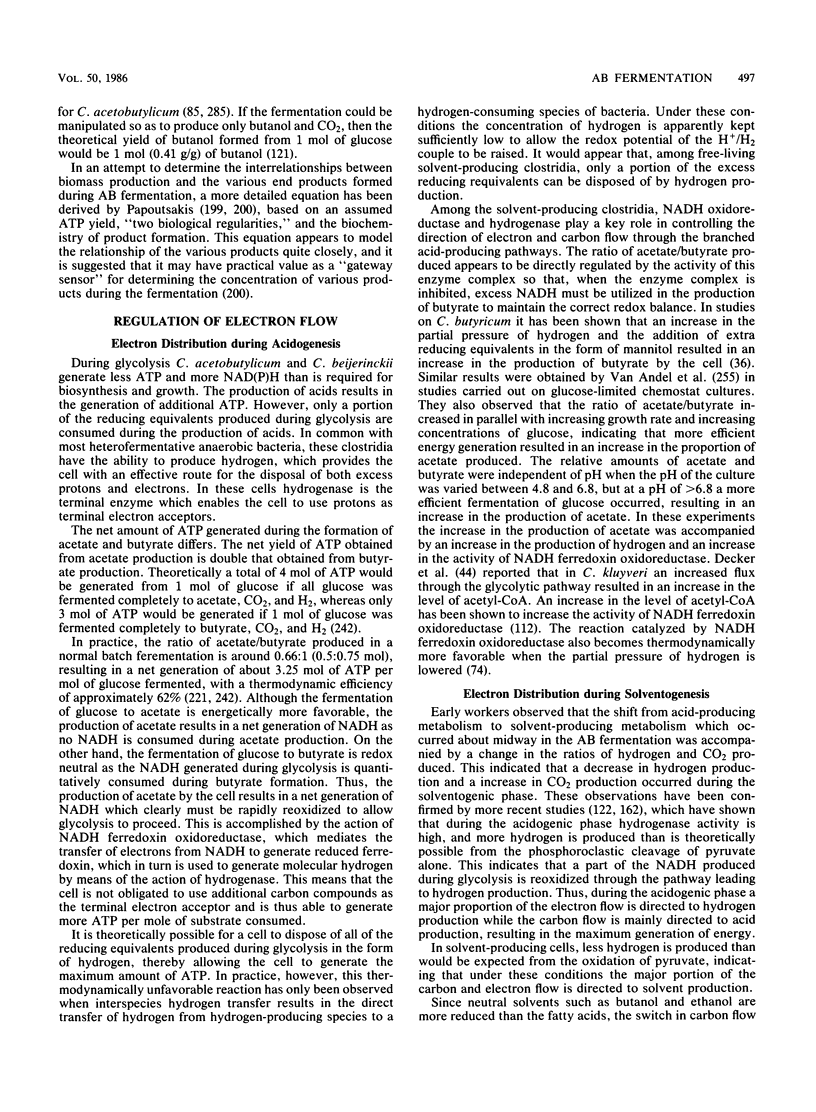
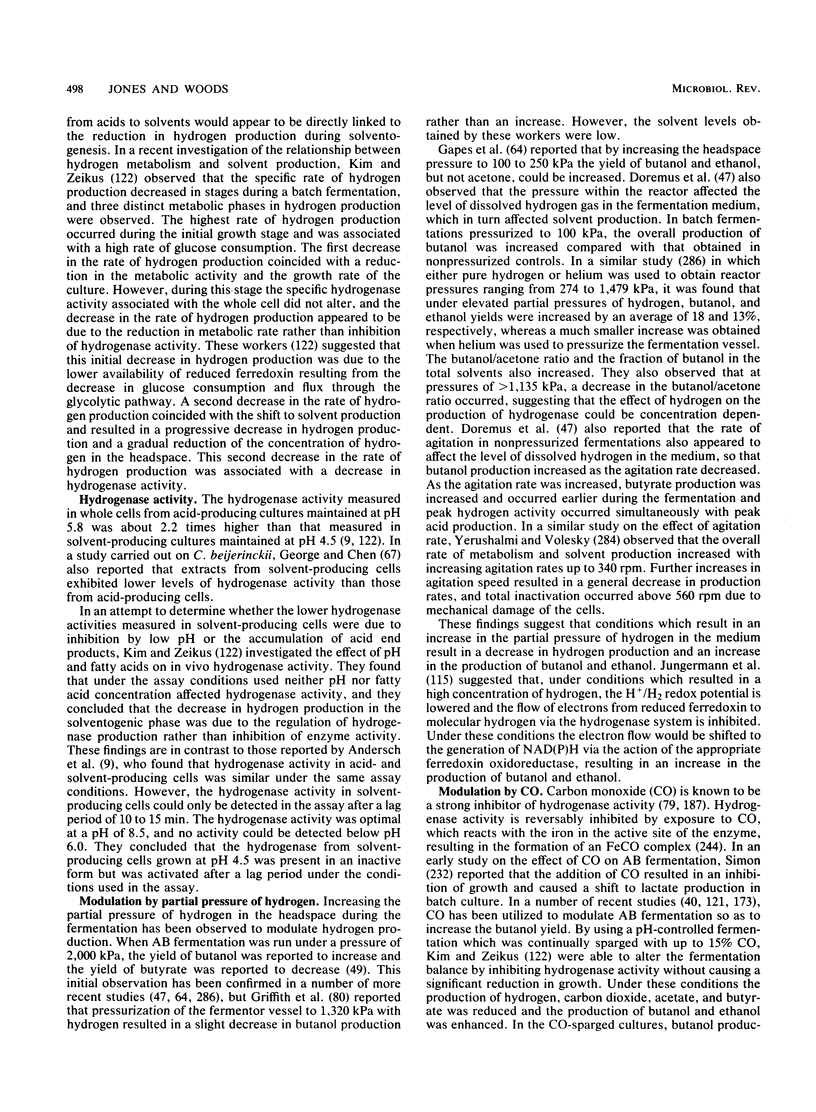
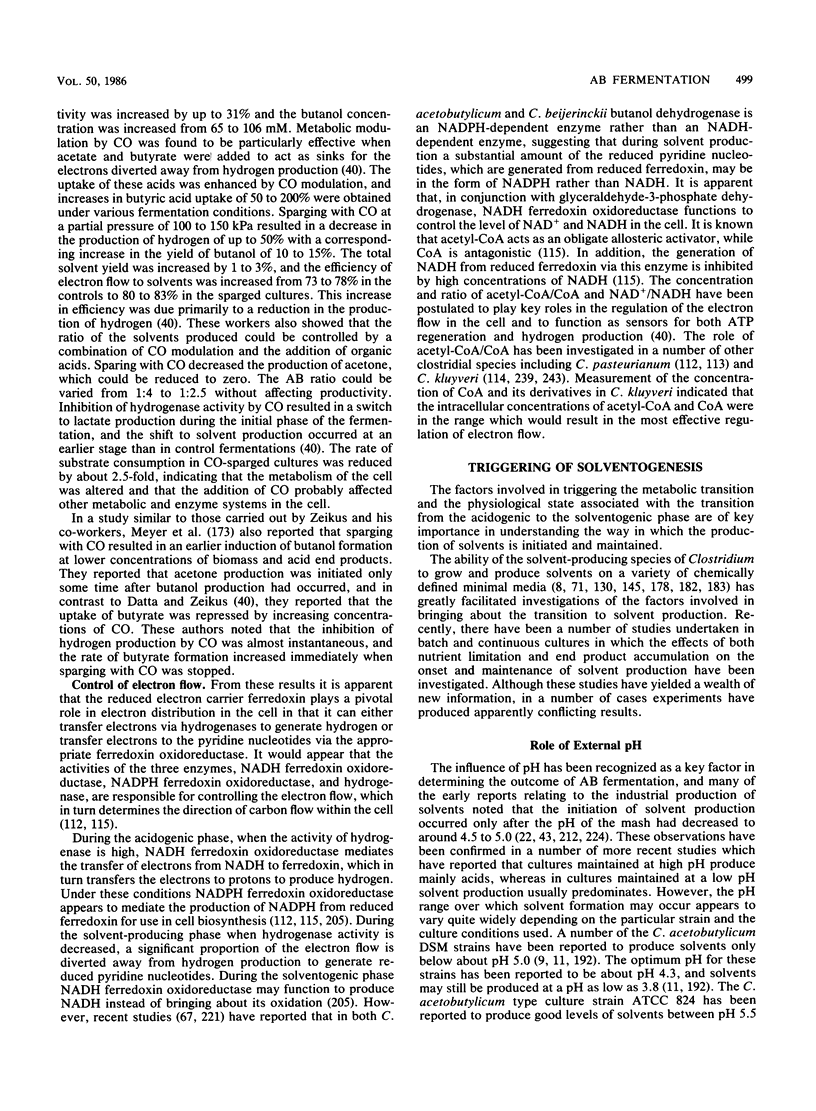
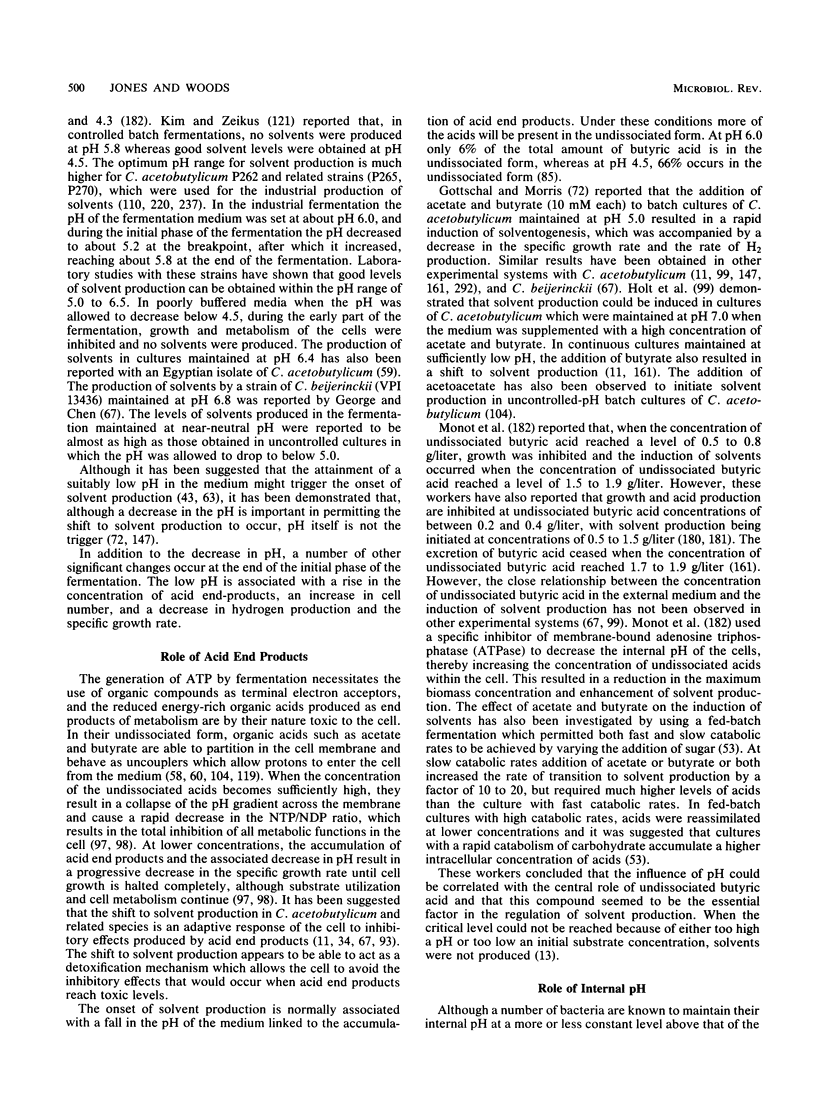
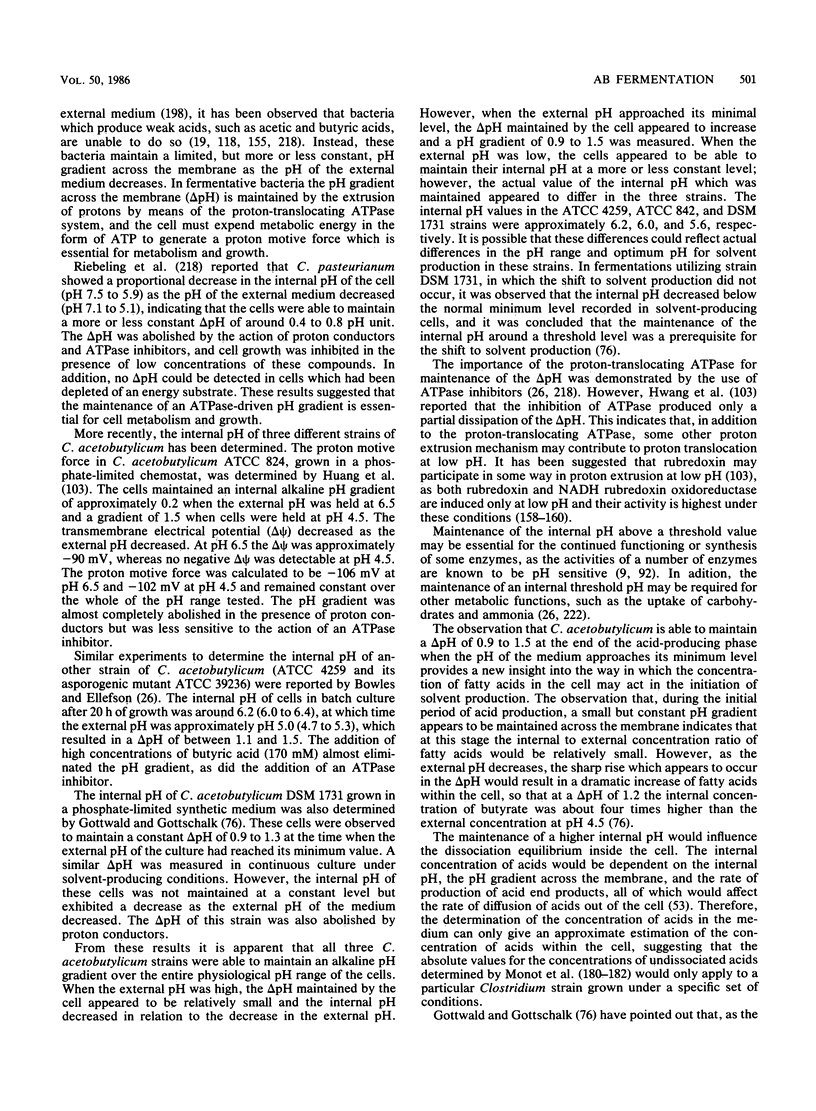
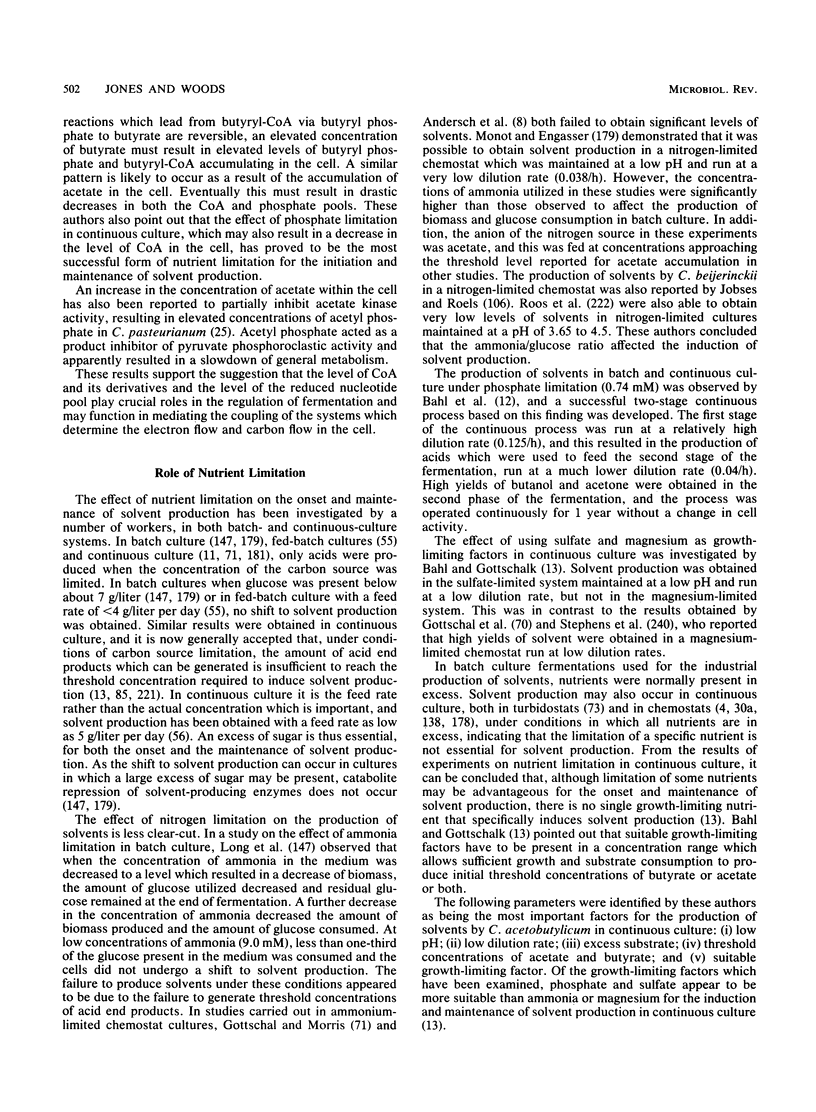
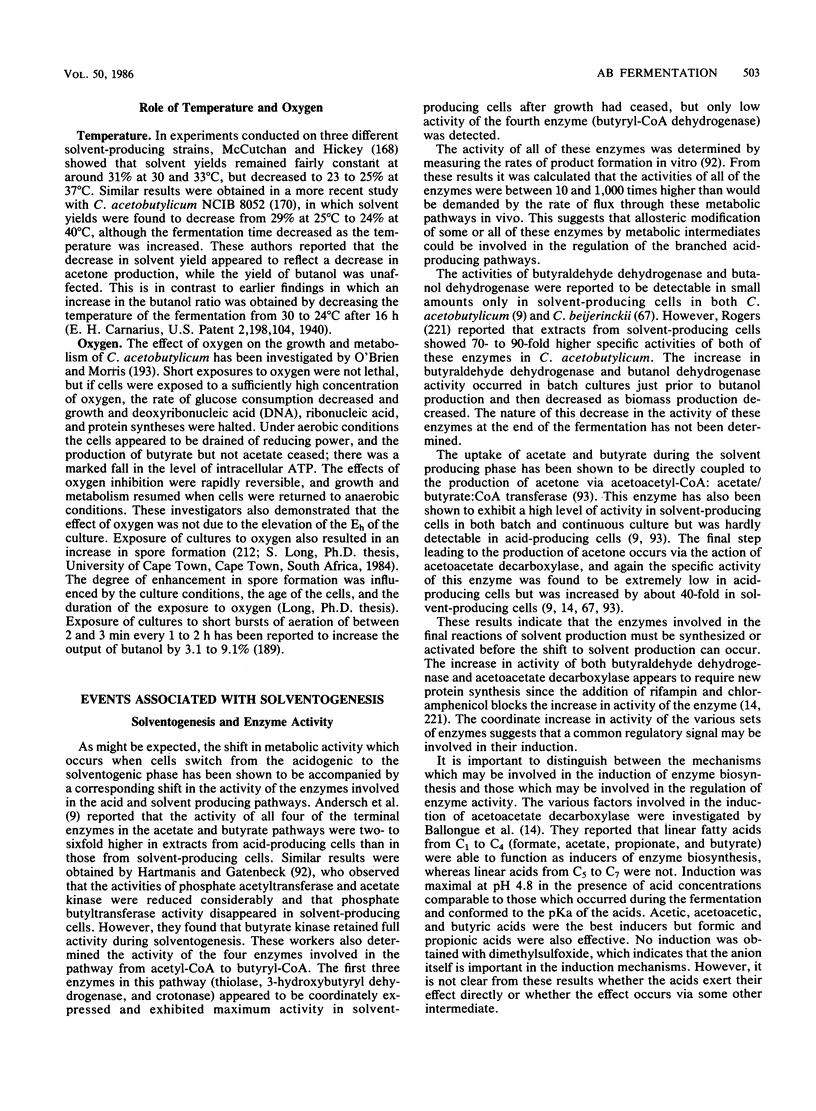
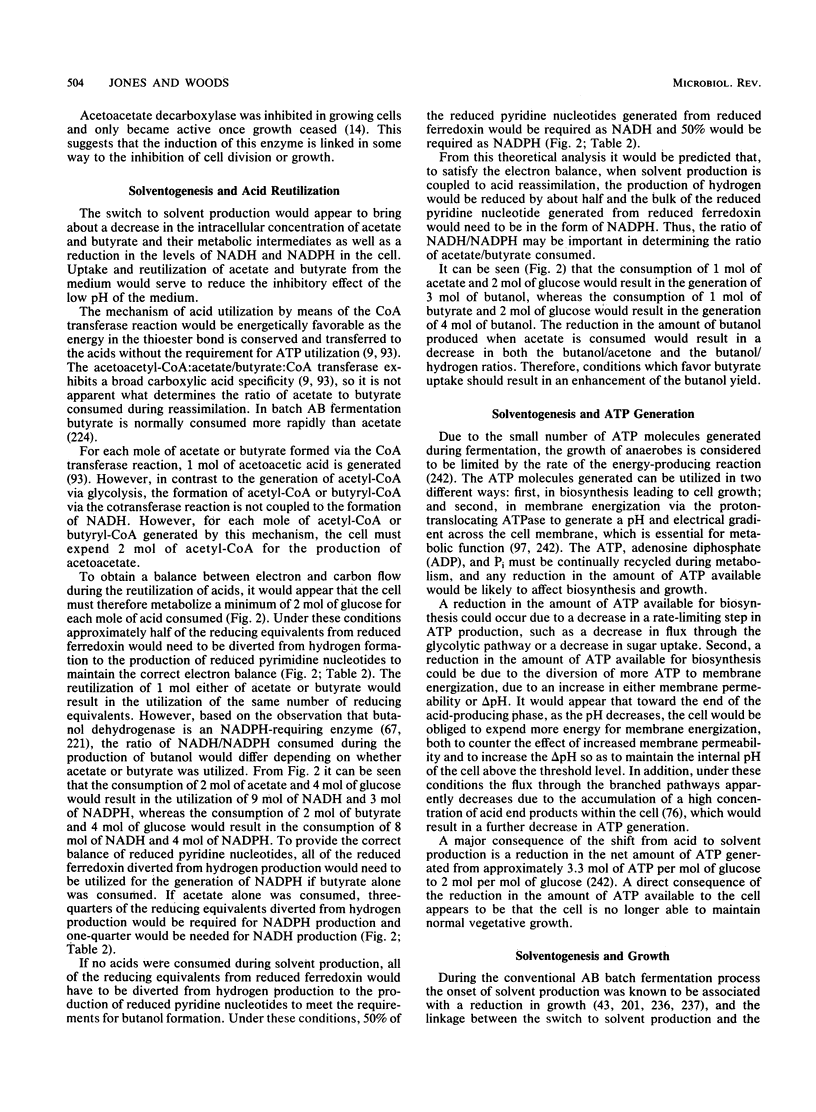
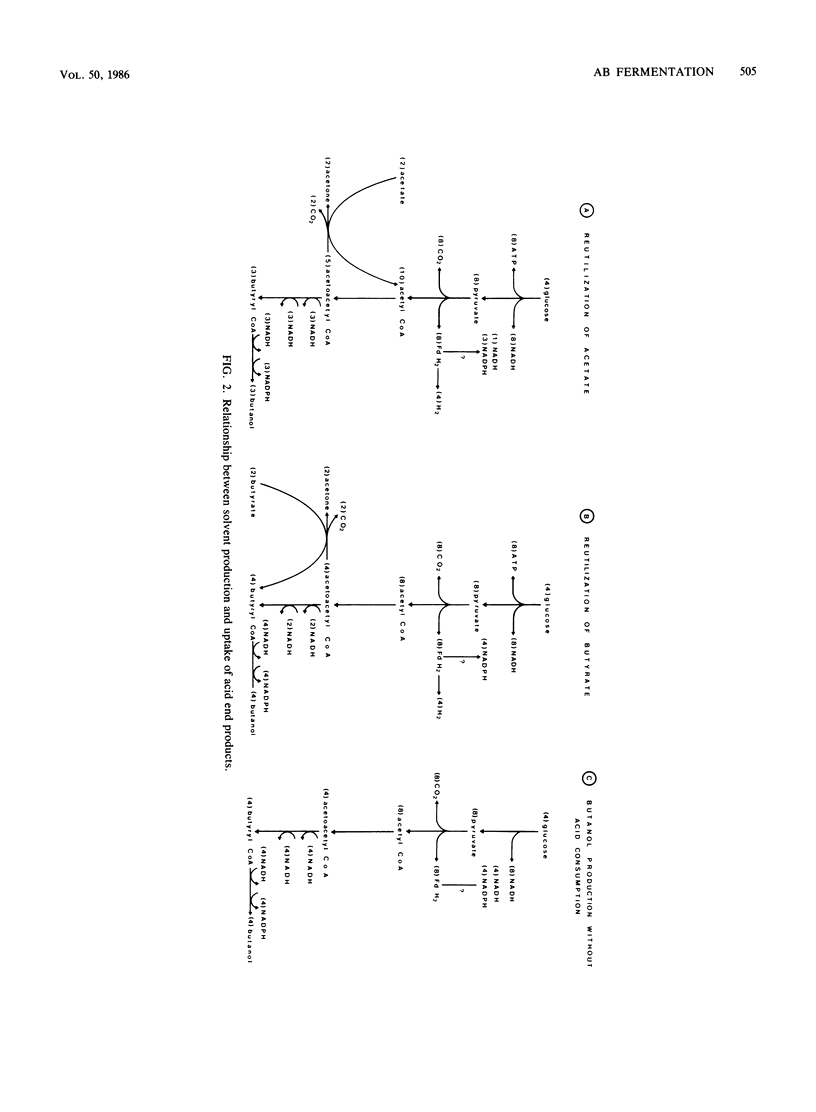
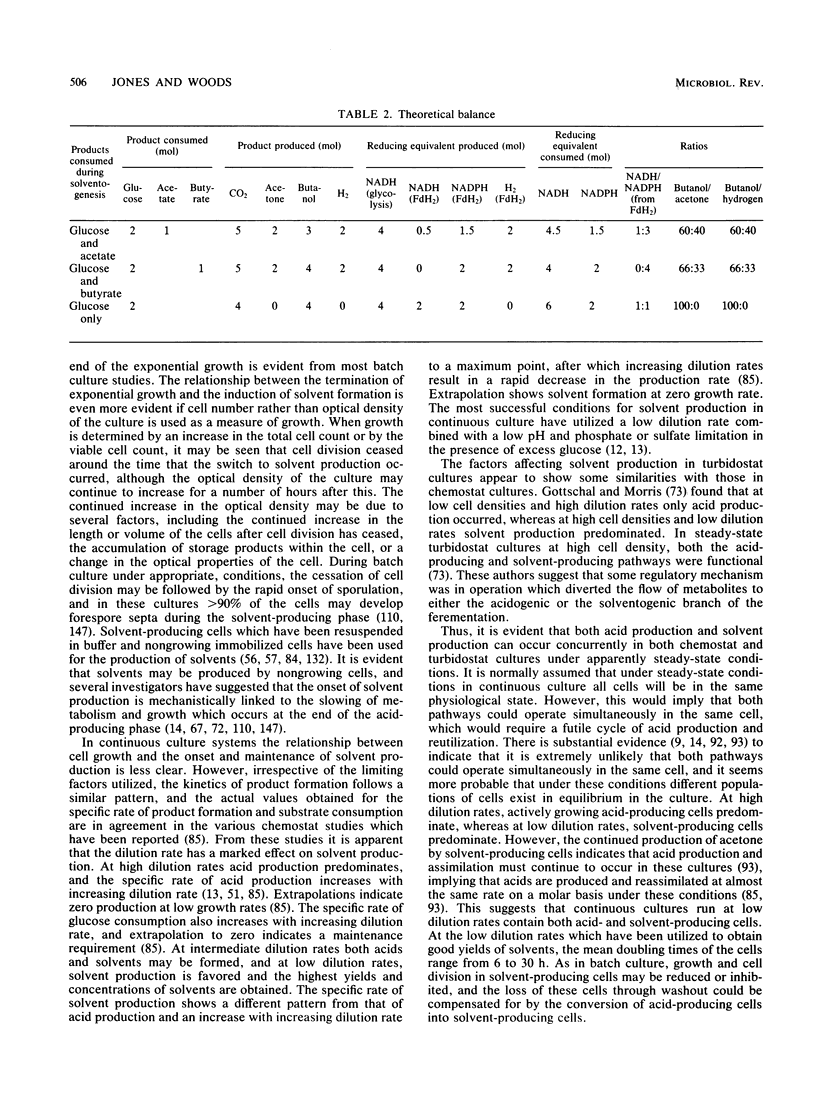
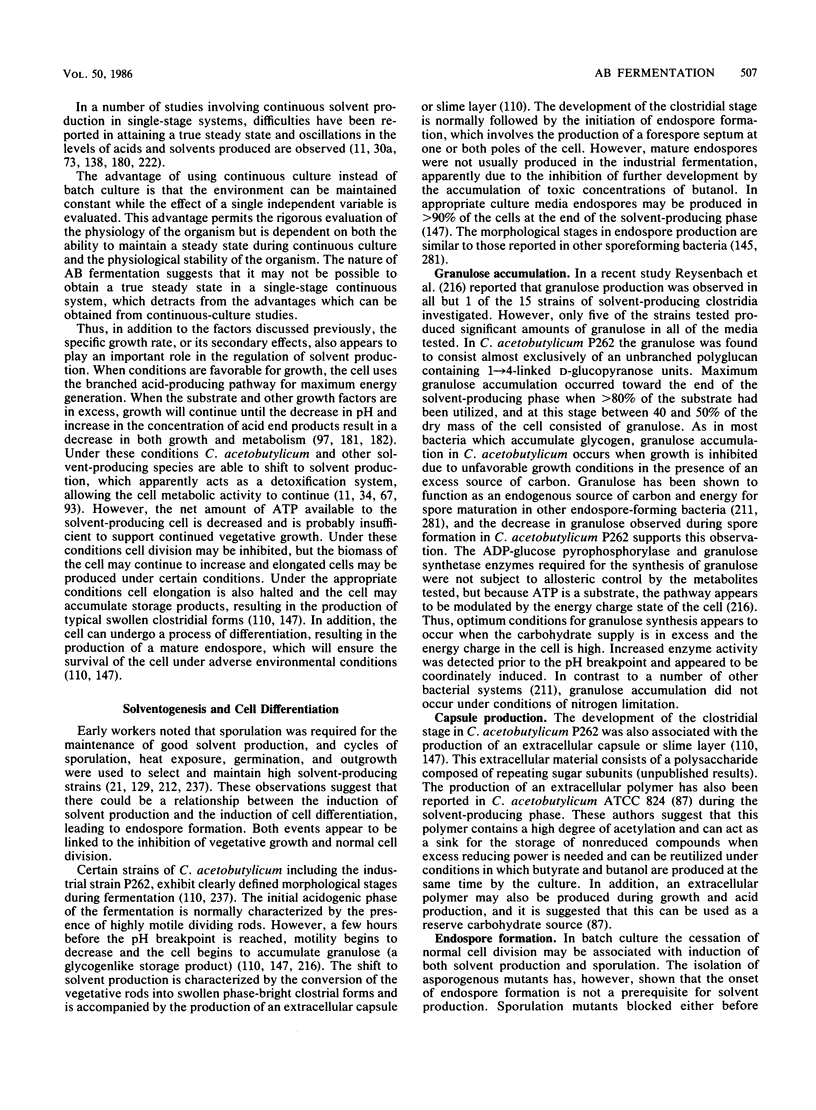
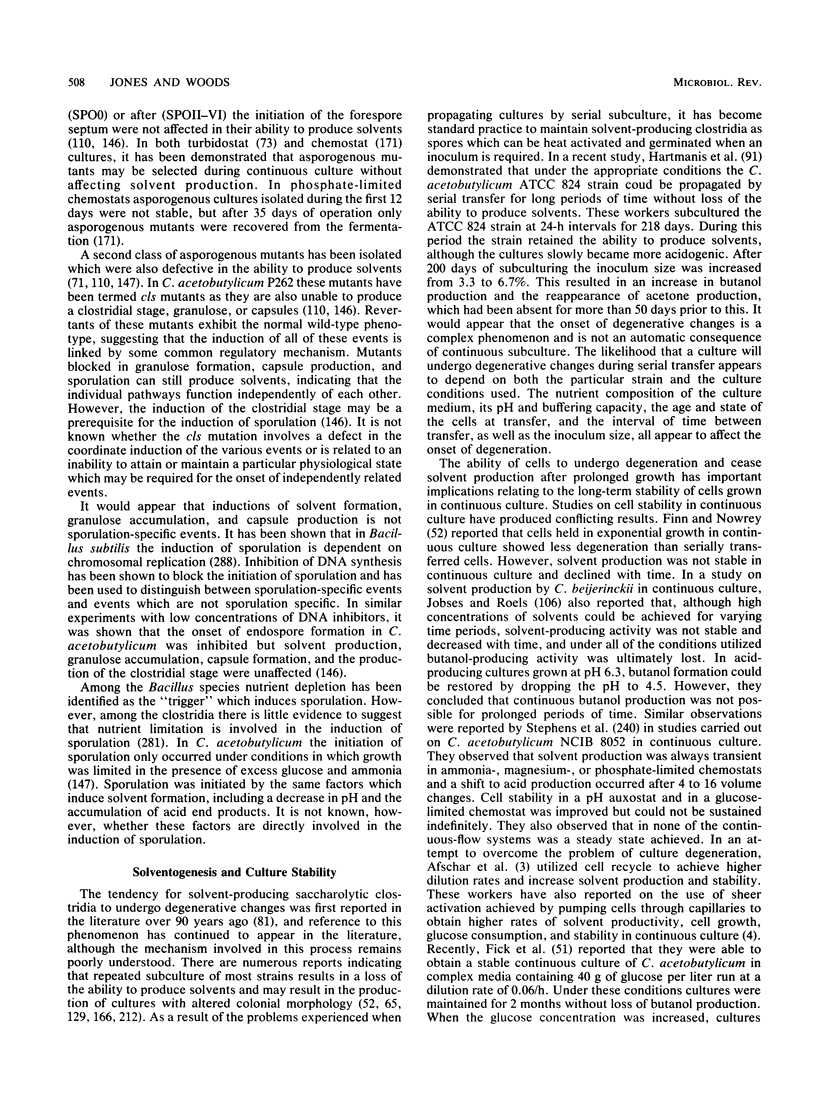
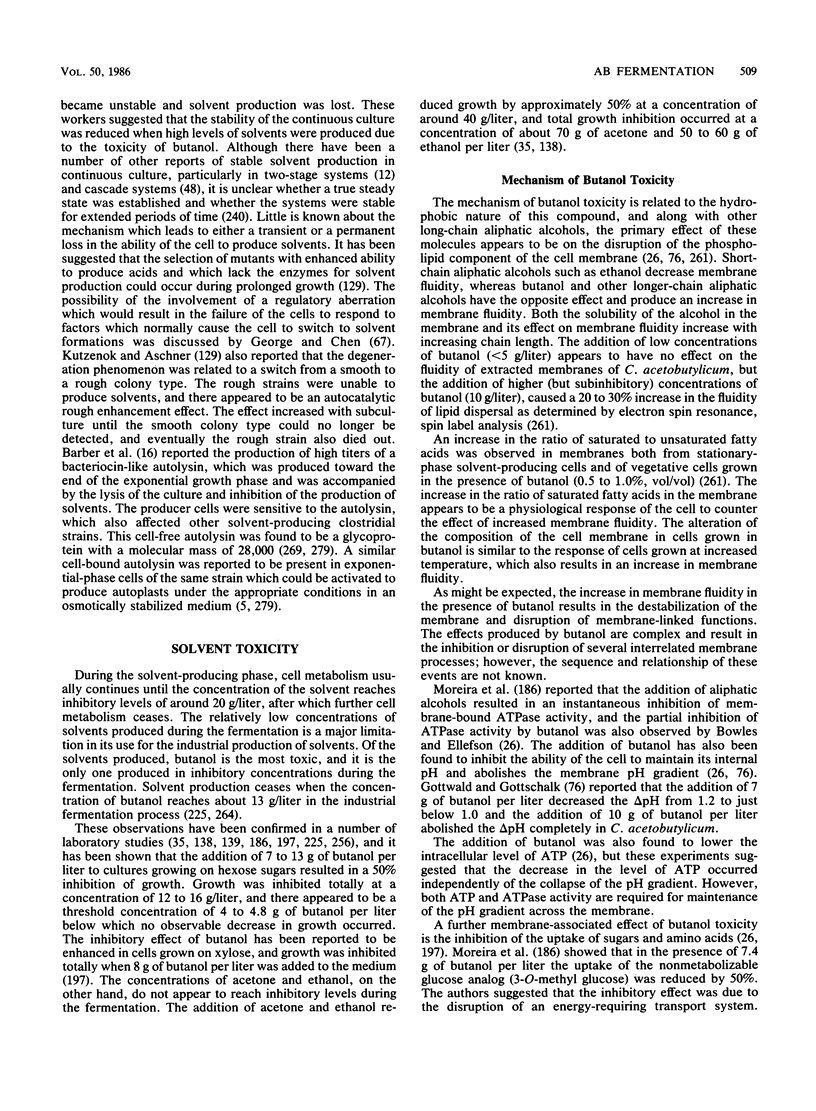
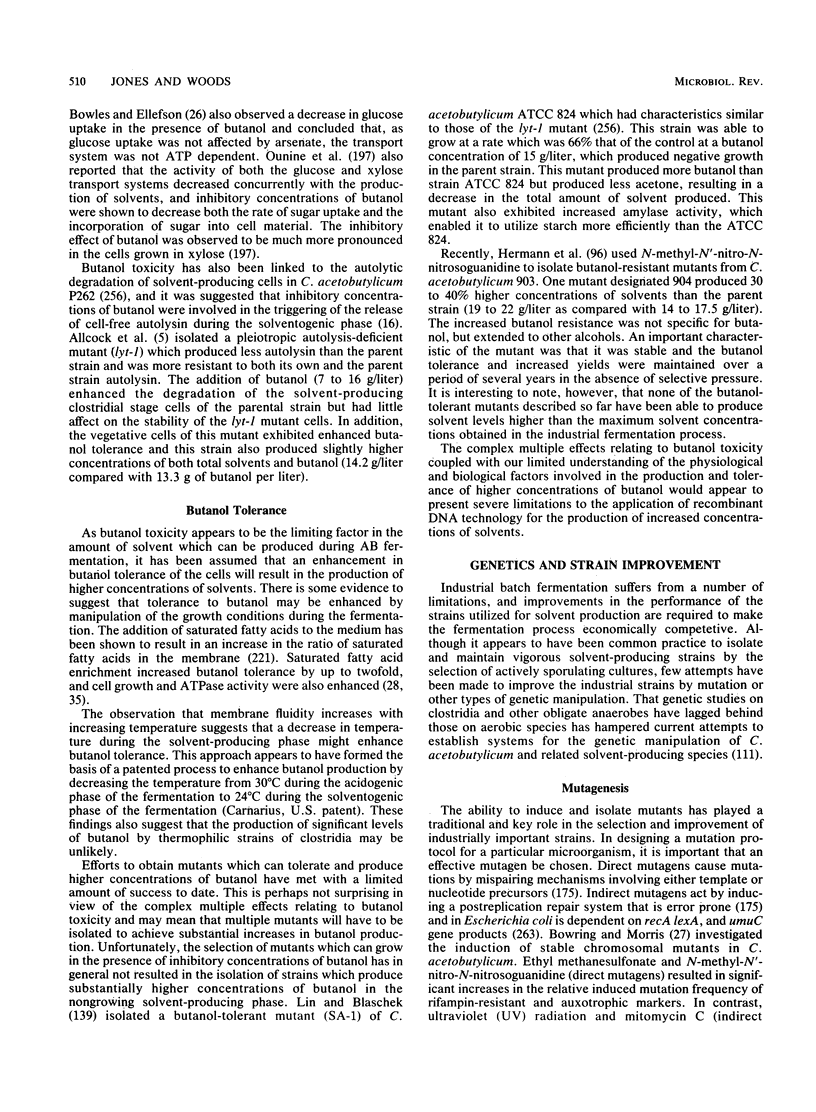
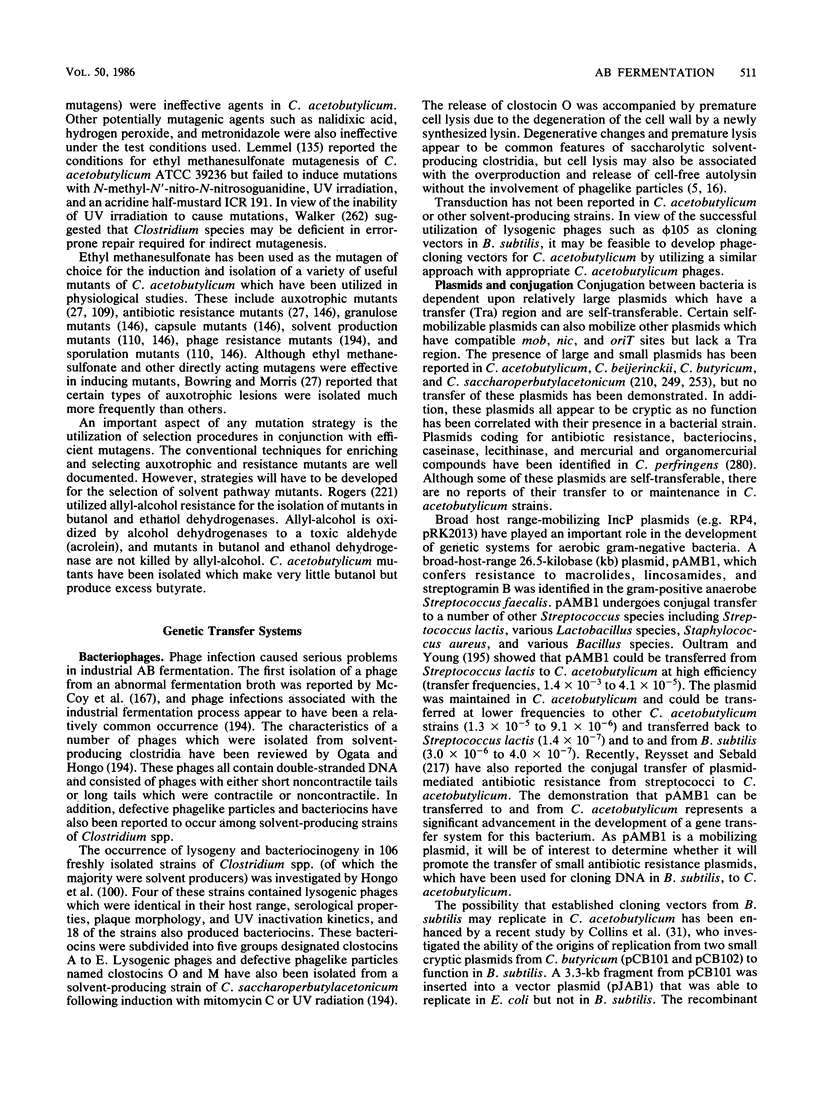
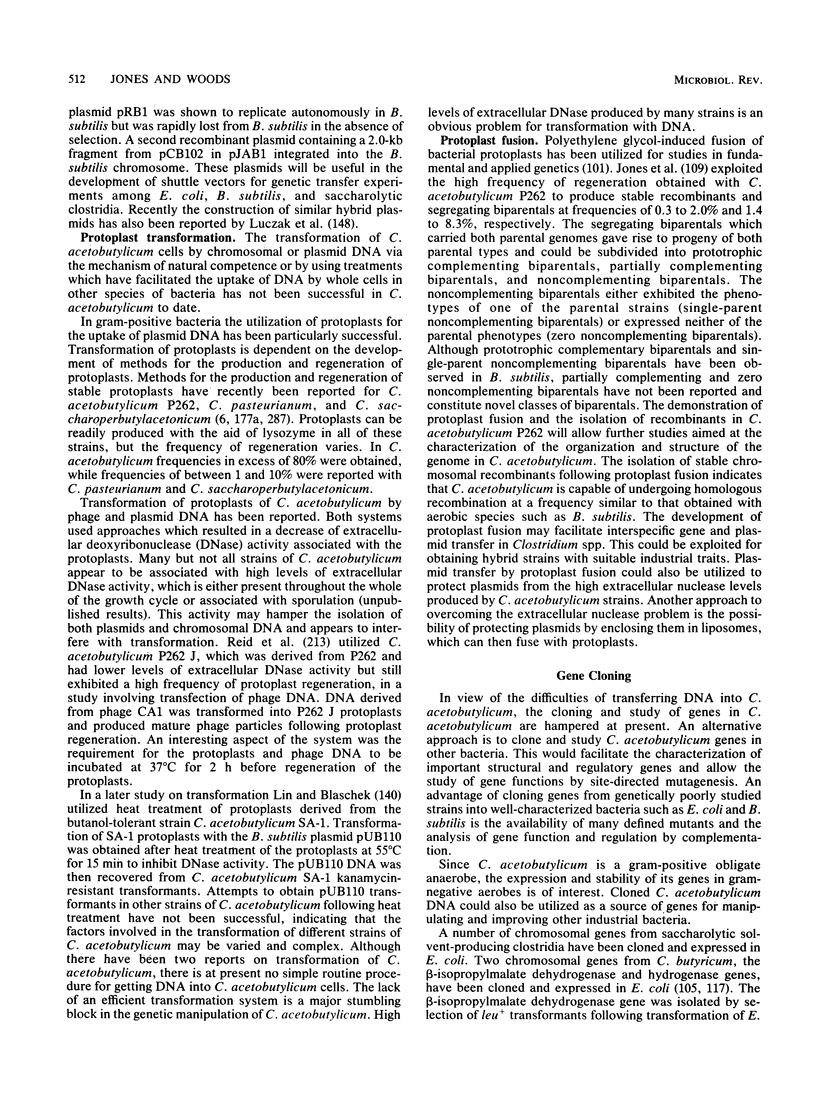
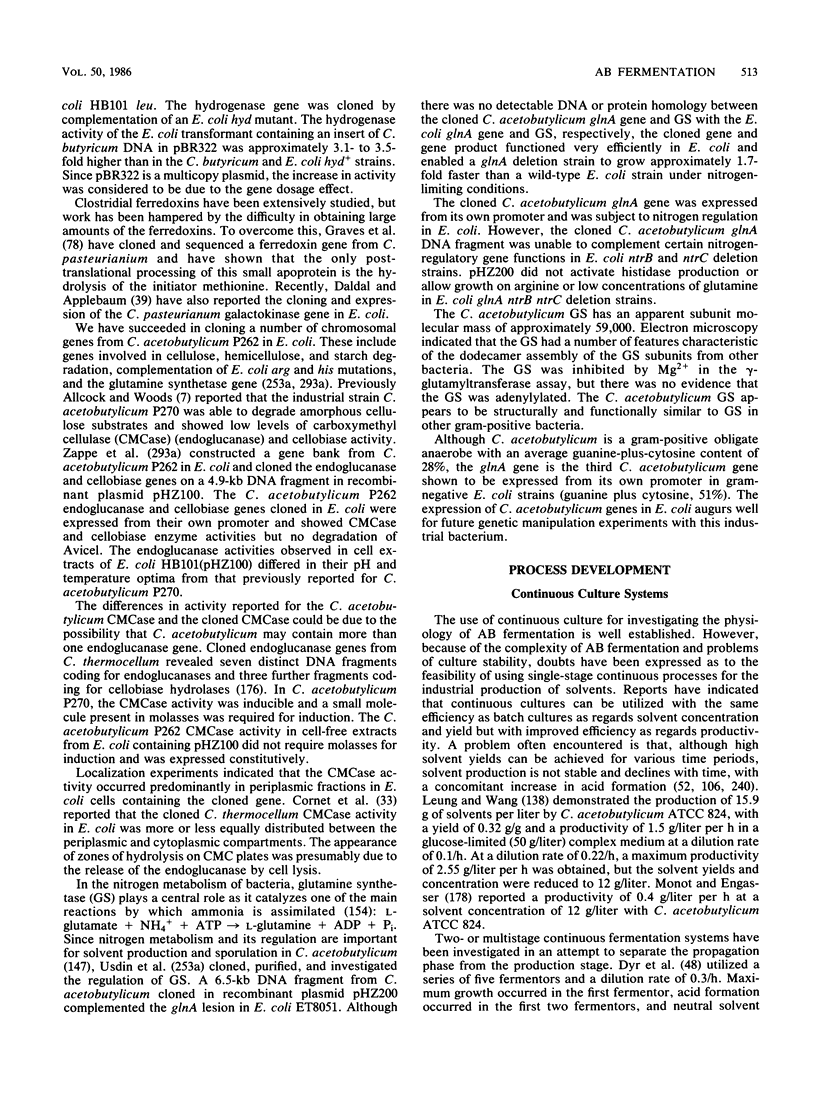
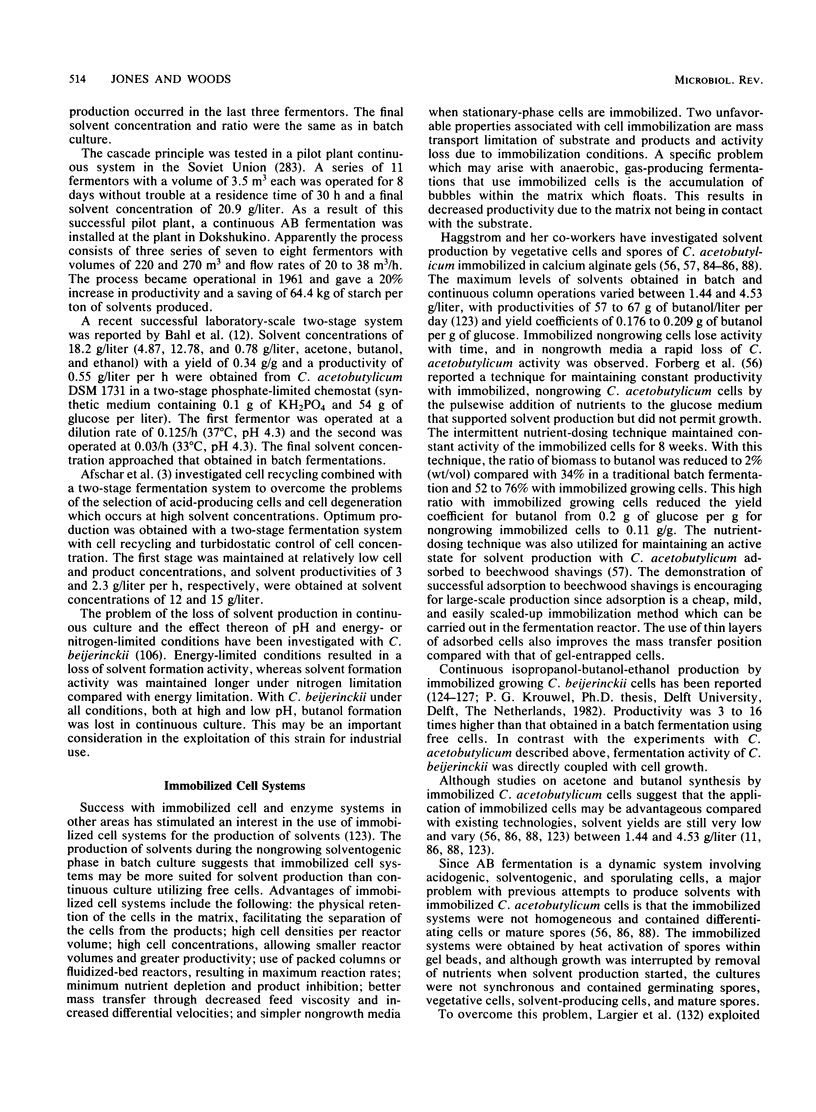
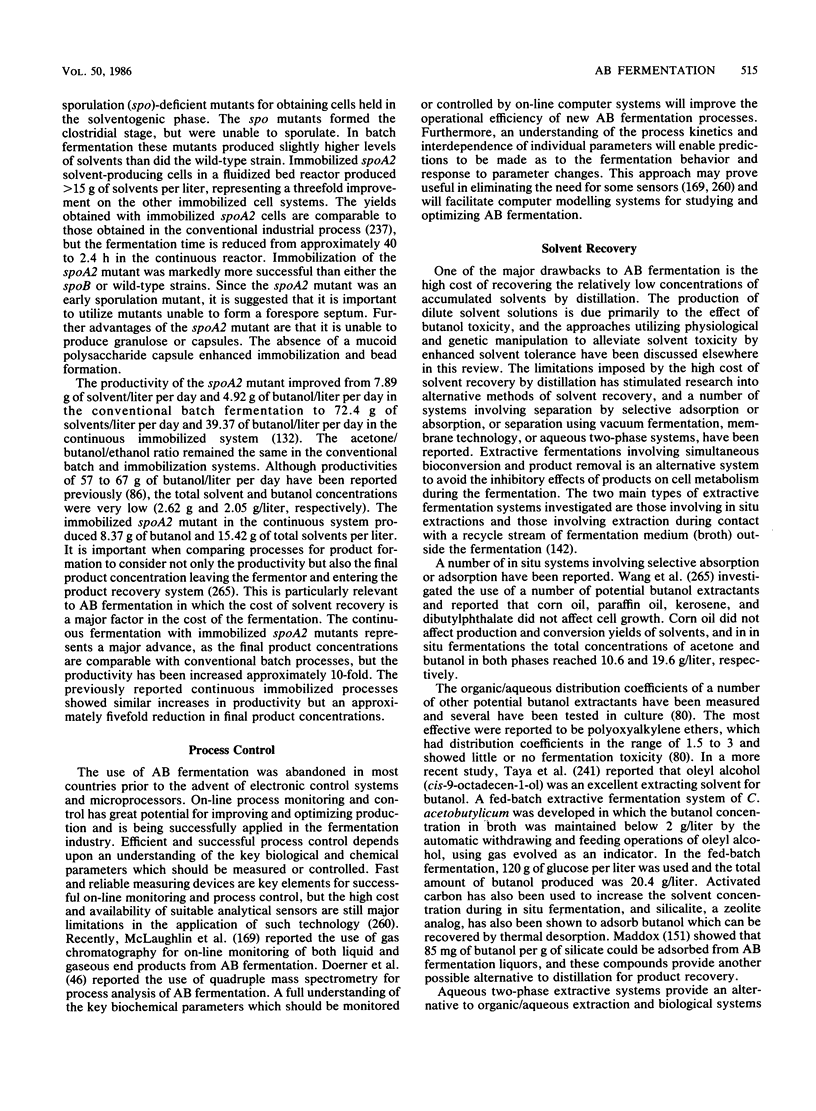
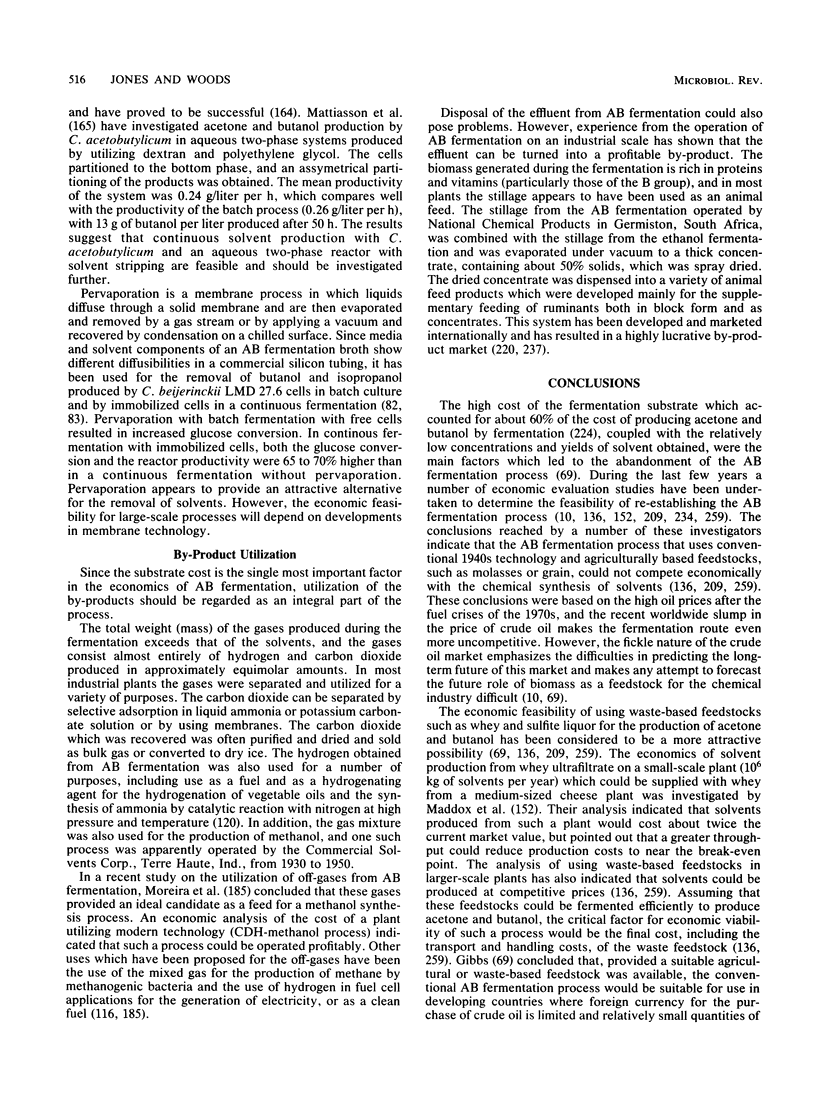
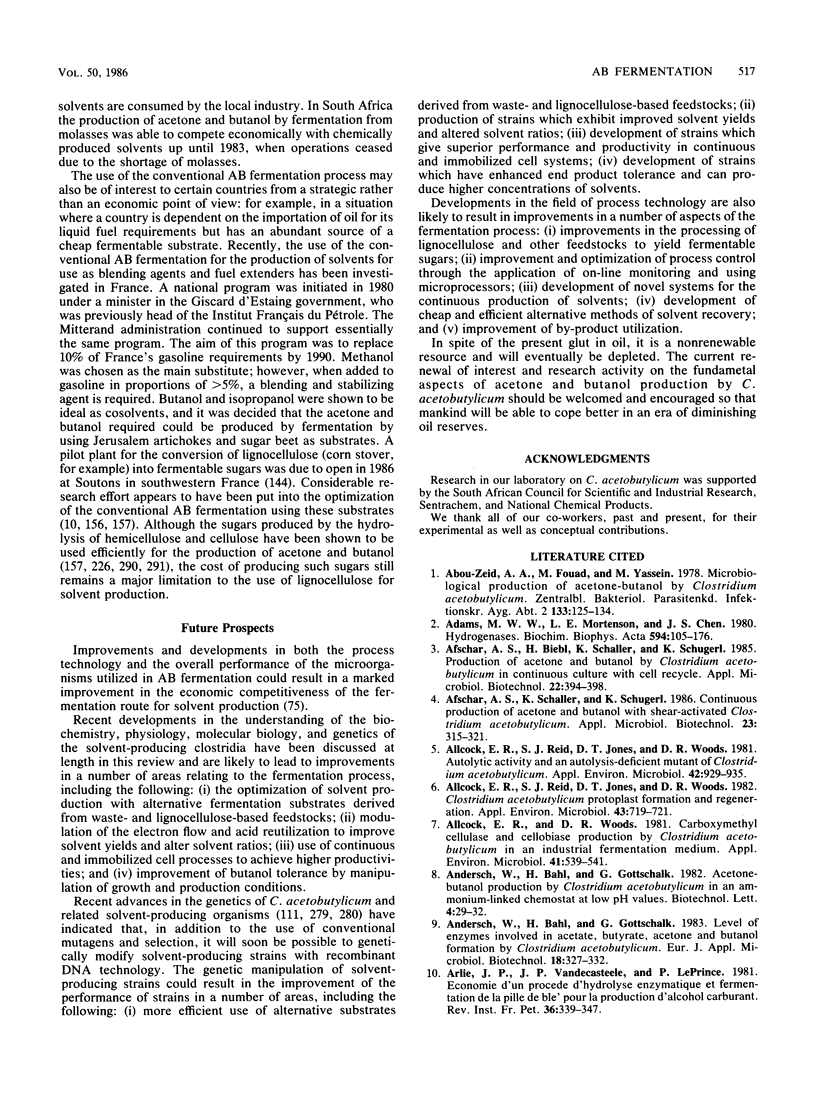
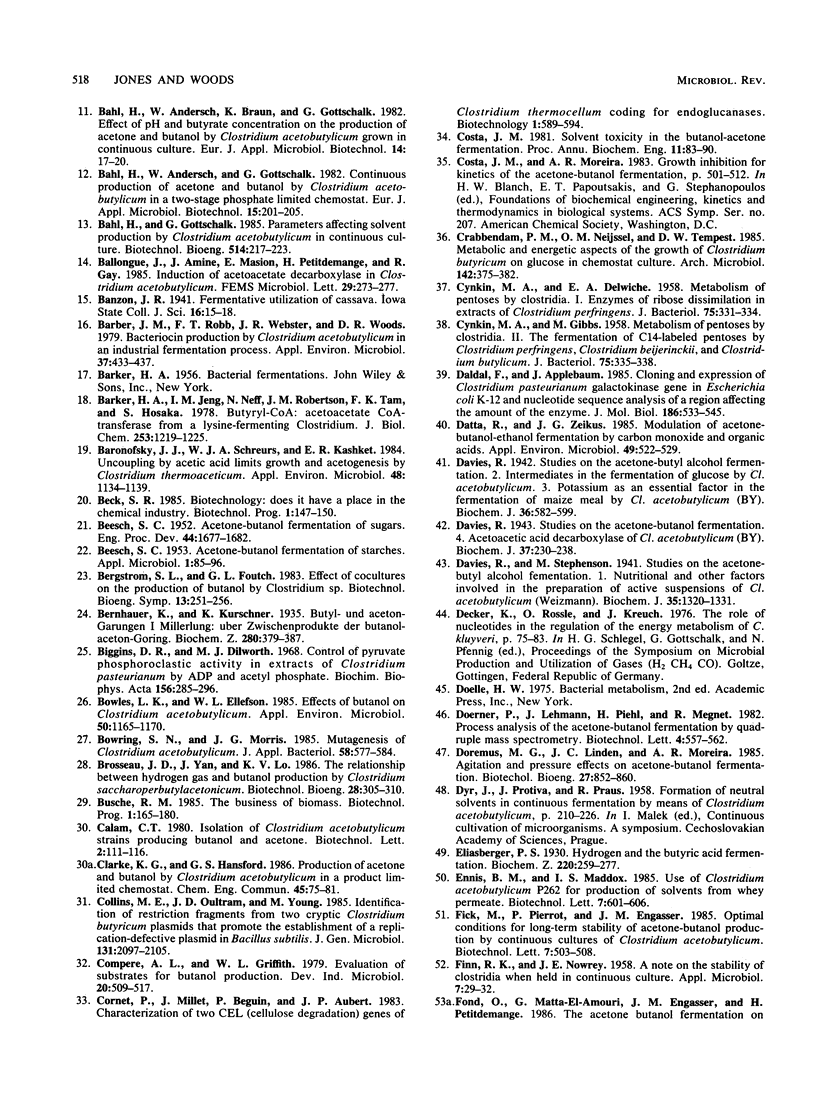
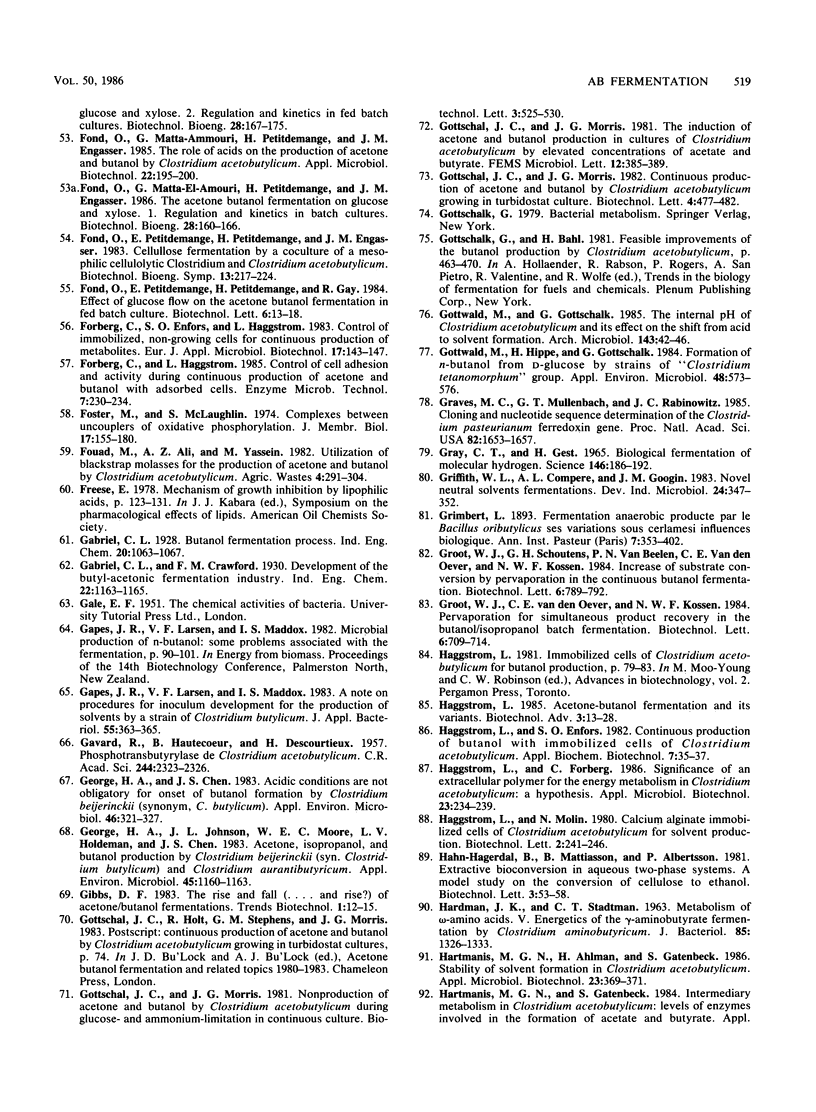
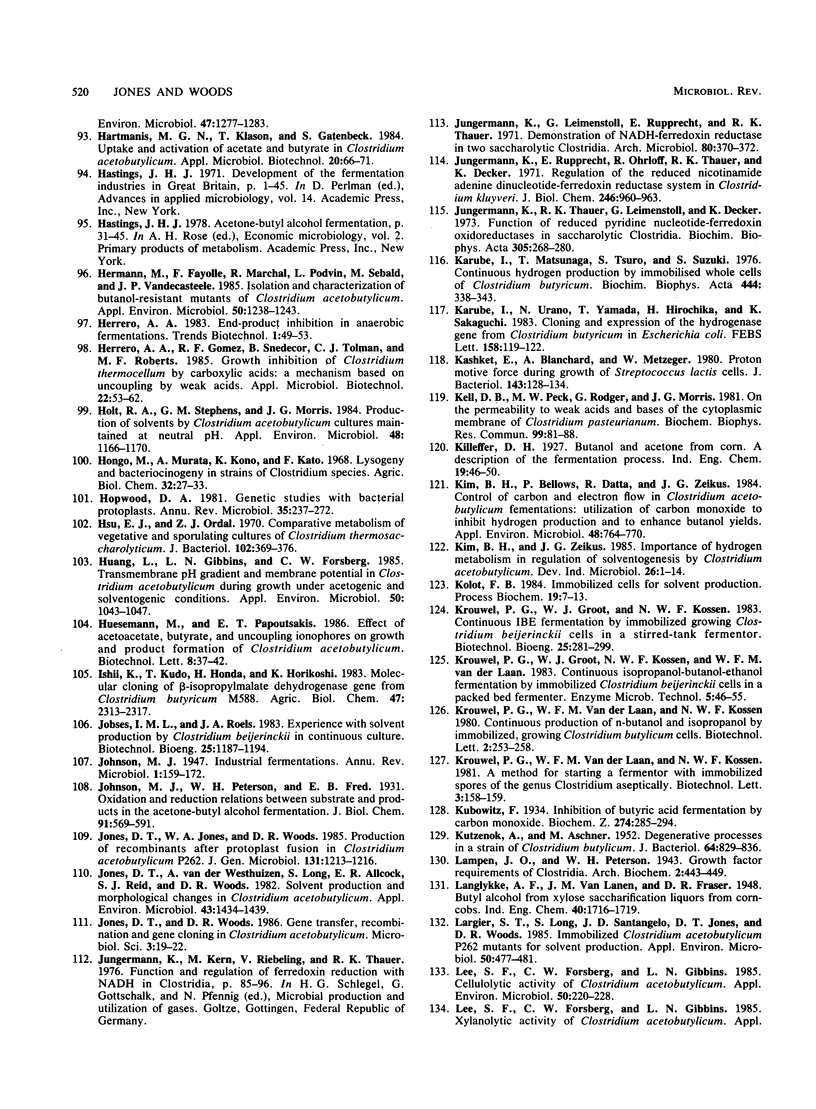
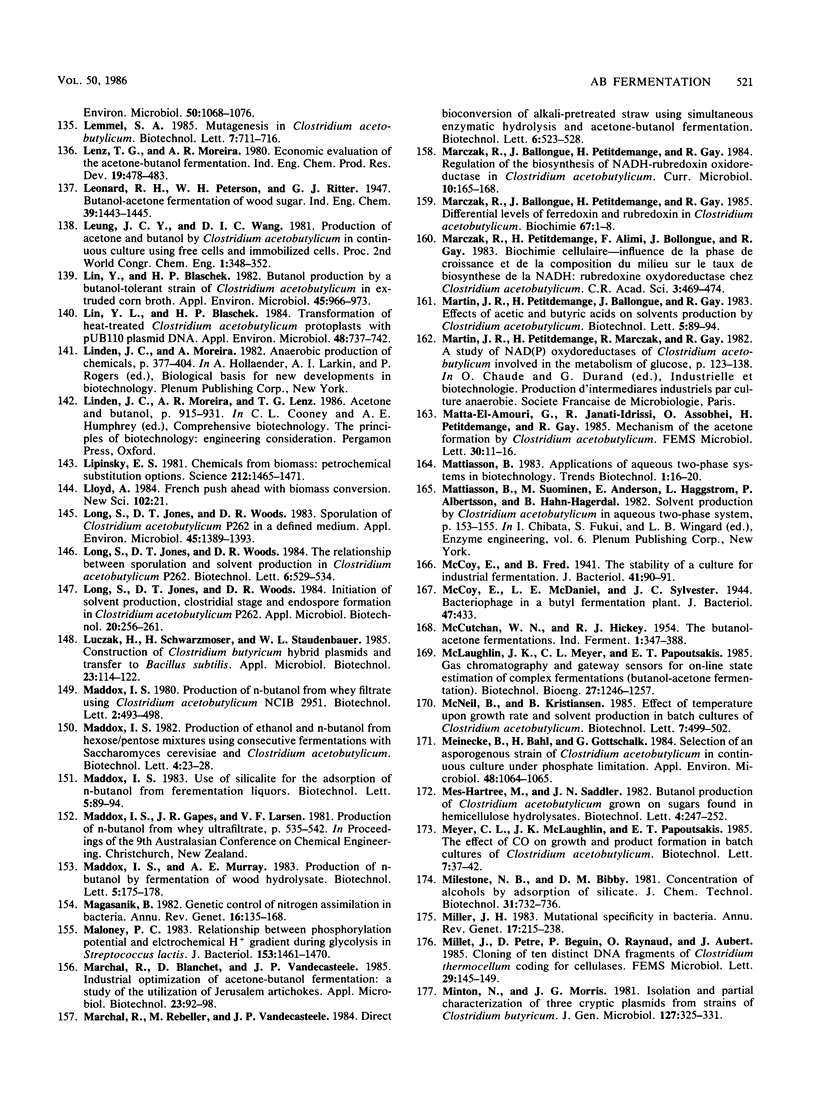
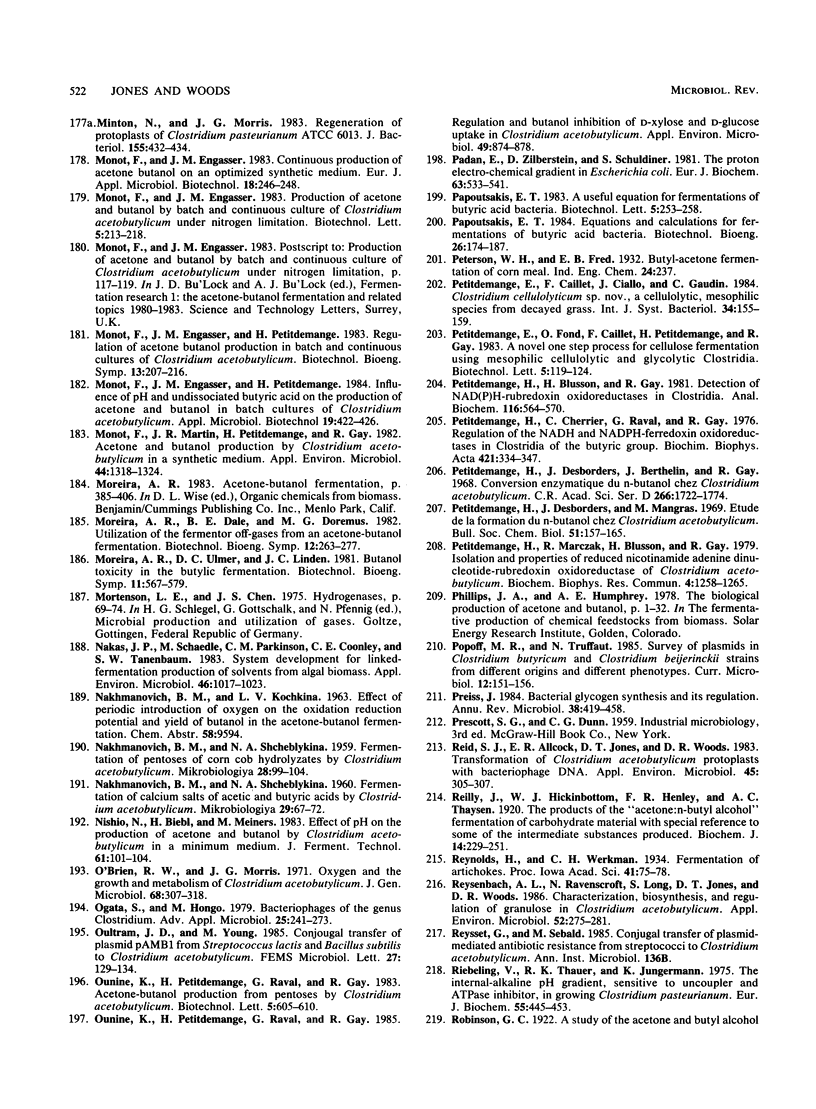
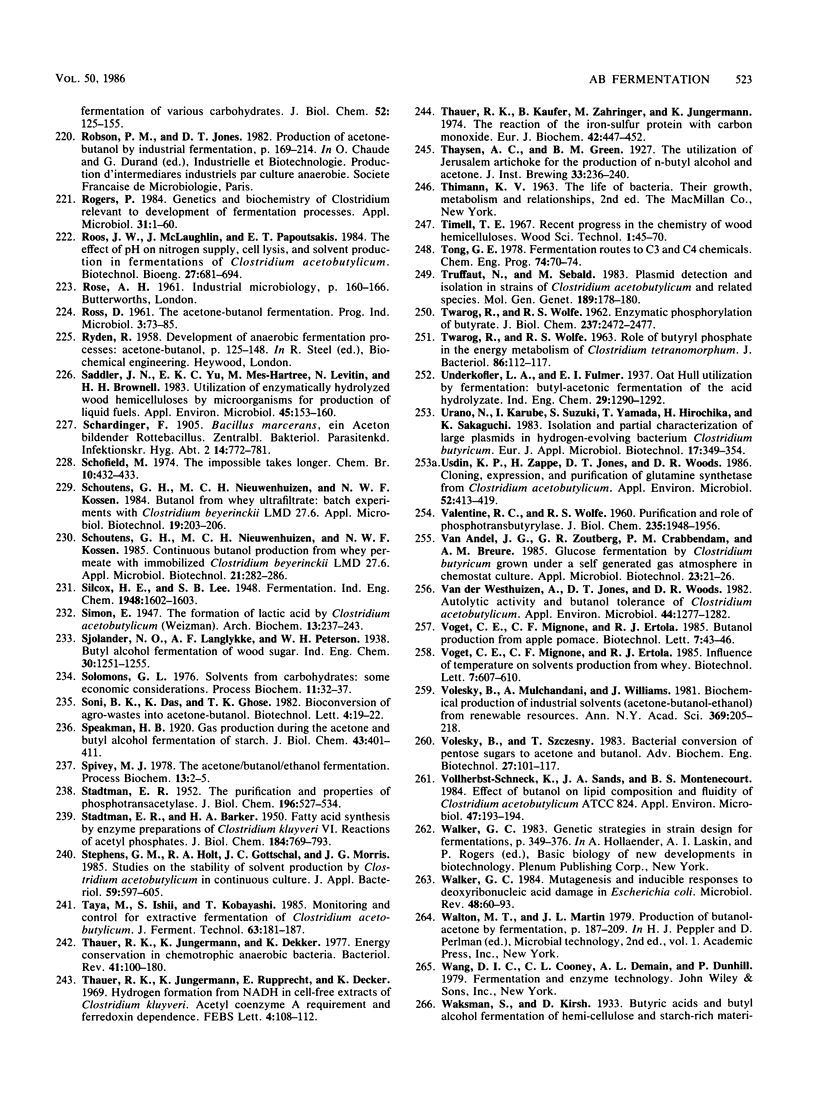
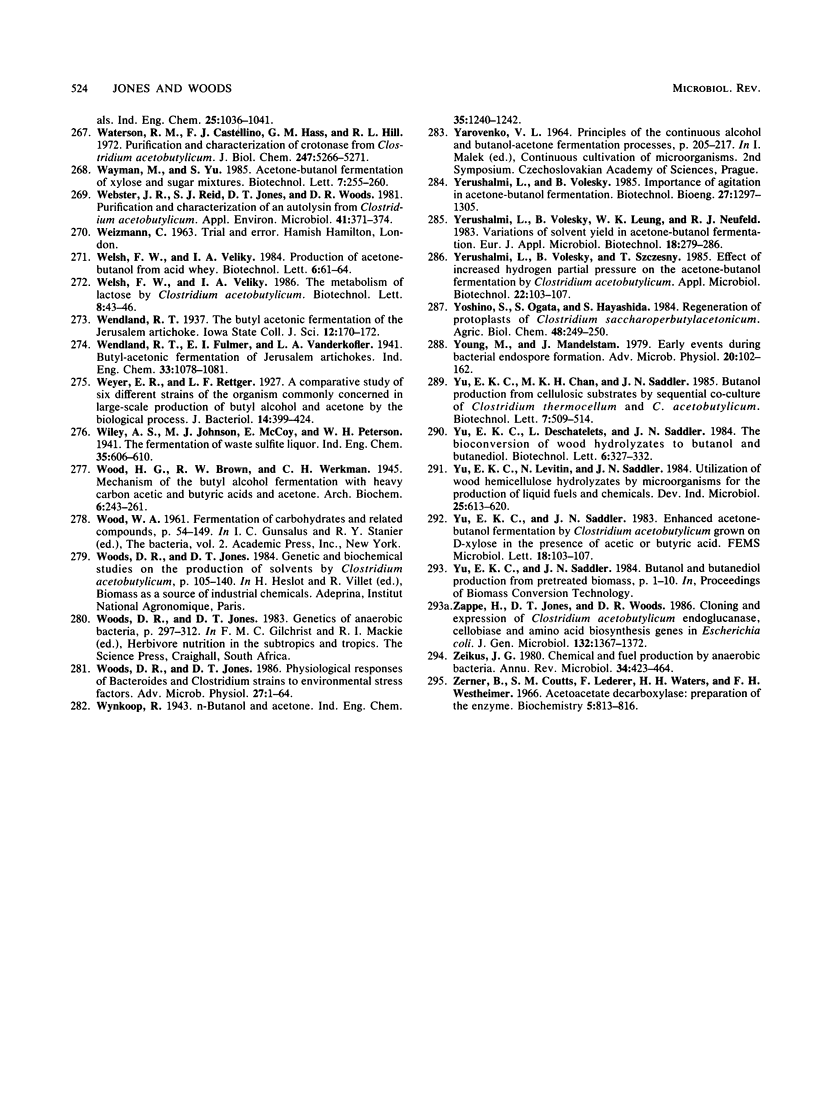
Selected References
These references are in PubMed. This may not be the complete list of references from this article.
- Abou-Zeid A. A., Fouad M., Yassein M. Microbiological production of acetone-butanol by Clostridium acetobutylicum. Zentralbl Bakteriol Naturwiss. 1978;133(2):125–134. doi: 10.1016/s0323-6056(78)80023-8. [DOI] [PubMed] [Google Scholar]
- Adams M. W., Mortenson L. E., Chen J. S. Hydrogenase. Biochim Biophys Acta. 1980 Dec;594(2-3):105–176. doi: 10.1016/0304-4173(80)90007-5. [DOI] [PubMed] [Google Scholar]
- Allcock E. R., Reid S. J., Jones D. T., Woods D. R. Autolytic Activity and an Autolysis-Deficient Mutant of Clostridium acetobutylicum. Appl Environ Microbiol. 1981 Dec;42(6):929–935. doi: 10.1128/aem.42.6.929-935.1981. [DOI] [PMC free article] [PubMed] [Google Scholar]
- Allcock E. R., Reid S. J., Jones D. T., Woods D. R. Clostridium acetobutylicum Protoplast Formation and Regeneration. Appl Environ Microbiol. 1982 Mar;43(3):719–721. doi: 10.1128/aem.43.3.719-721.1982. [DOI] [PMC free article] [PubMed] [Google Scholar]
- Allcock E. R., Woods D. R. Carboxymethyl cellulase and cellobiase production by Clostridium acetobutylicum in an industrial fermentation medium. Appl Environ Microbiol. 1981 Feb;41(2):539–541. doi: 10.1128/aem.41.2.539-541.1981. [DOI] [PMC free article] [PubMed] [Google Scholar]
- BEESCH S. C. Acetone-butanol fermentation of starches. Appl Microbiol. 1953 Mar;1(2):85–95. doi: 10.1128/am.1.2.85-95.1953. [DOI] [PMC free article] [PubMed] [Google Scholar]
- Barber J. M., Robb F. T., Webster J. R., Woods D. R. Bacteriocin production by Clostridium acetobutylicum in an industrial fermentation process. Appl Environ Microbiol. 1979 Mar;37(3):433–437. doi: 10.1128/aem.37.3.433-437.1979. [DOI] [PMC free article] [PubMed] [Google Scholar]
- Barker H. A., Jeng I. M., Neff N., Robertson J. M., Tam F. K., Hosaka S. Butyryl-CoA:acetoacetate CoA-transferase from a lysine-fermenting Clostridium. J Biol Chem. 1978 Feb 25;253(4):1219–1225. [PubMed] [Google Scholar]
- Baronofsky J. J., Schreurs W. J., Kashket E. R. Uncoupling by Acetic Acid Limits Growth of and Acetogenesis by Clostridium thermoaceticum. Appl Environ Microbiol. 1984 Dec;48(6):1134–1139. doi: 10.1128/aem.48.6.1134-1139.1984. [DOI] [PMC free article] [PubMed] [Google Scholar]
- Beguin S. En hommage à A. Kepes. Biochimie. 1985 Jan;67(1):1–7. doi: 10.1016/s0300-9084(85)80224-8. [DOI] [PubMed] [Google Scholar]
- Biggins D. R., Dilworth M. J. Control of pyruvate phosphoroclastic activity in extracts of Clostridium pasteurianum by ADP and acetyl phosphate. Biochim Biophys Acta. 1968 Mar 11;156(2):285–296. doi: 10.1016/0304-4165(68)90257-2. [DOI] [PubMed] [Google Scholar]
- Bowles L. K., Ellefson W. L. Effects of butanol on Clostridium acetobutylicum. Appl Environ Microbiol. 1985 Nov;50(5):1165–1170. doi: 10.1128/aem.50.5.1165-1170.1985. [DOI] [PMC free article] [PubMed] [Google Scholar]
- Bowring S. N., Morris J. G. Mutagenesis of Clostridium acetobutylicum. J Appl Bacteriol. 1985 Jun;58(6):577–584. doi: 10.1111/j.1365-2672.1985.tb01714.x. [DOI] [PubMed] [Google Scholar]
- CYNKIN M. A., DELWICHE E. A. Metabolism of pentoses by clostridia. I. Enzymes of ribose dissimilation in extracts of Clostridium perfringens. J Bacteriol. 1958 Mar;75(3):331–334. doi: 10.1128/jb.75.3.331-334.1958. [DOI] [PMC free article] [PubMed] [Google Scholar]
- CYNKIN M. A., GIBBS M. Metabolism of pentoses by clostridia. II. The fermentation of C14-labeled pentoses by Clostridium per fringens, Clostridium beijerinckii, and Clostridium butylicum. J Bacteriol. 1958 Mar;75(3):335–338. doi: 10.1128/jb.75.3.335-338.1958. [DOI] [PMC free article] [PubMed] [Google Scholar]
- Collins M. E., Oultram J. D., Young M. Identification of restriction fragments from two cryptic Clostridium butyricum plasmids that promote the establishment of a replication-defective plasmid in Bacillus subtilis. J Gen Microbiol. 1985 Aug;131(8):2097–2105. doi: 10.1099/00221287-131-8-2097. [DOI] [PubMed] [Google Scholar]
- Crabbendam P. M., Neijssel O. M., Tempest D. W. Metabolic and energetic aspects of the growth of Clostridium butyricum on glucose in chemostat culture. Arch Microbiol. 1985 Sep;142(4):375–382. doi: 10.1007/BF00491907. [DOI] [PubMed] [Google Scholar]
- Daldal F., Applebaum J. Cloning and expression of Clostridium pasteurianum galactokinase gene in Escherichia coli K-12 and nucleotide sequence analysis of a region affecting the amount of the enzyme. J Mol Biol. 1985 Dec 5;186(3):533–545. doi: 10.1016/0022-2836(85)90128-7. [DOI] [PubMed] [Google Scholar]
- Datta R., Zeikus J. G. Modulation of acetone-butanol-ethanol fermentation by carbon monoxide and organic acids. Appl Environ Microbiol. 1985 Mar;49(3):522–529. doi: 10.1128/aem.49.3.522-529.1985. [DOI] [PMC free article] [PubMed] [Google Scholar]
- Davies R., Stephenson M. Studies on the acetone-butyl alcohol fermentation: Nutritional and other factors involved in the preparation of active suspensions of Cl. acetobutylicum (Weizmann). Biochem J. 1941 Dec;35(12):1320–1331. doi: 10.1042/bj0351320. [DOI] [PMC free article] [PubMed] [Google Scholar]
- Davies R. Studies on the acetone-butanol fermentation: 4. Acetoacetic acid decarboxylase of Cl. acetobutylicum (BY). Biochem J. 1943 Jul;37(2):230–238. doi: 10.1042/bj0370230. [DOI] [PMC free article] [PubMed] [Google Scholar]
- Davies R. Studies on the acetone-butyl alcohol fermentation: Intermediates in the fermentation of glucose by Cl. acetobutylicum. 3. Potassium as an essential factor in the fermentation of maize meal by Cl. acetobutylicum (BY). Biochem J. 1942 Sep;36(7-9):582–599. doi: 10.1042/bj0360582. [DOI] [PMC free article] [PubMed] [Google Scholar]
- FINN R. K., NOWREY J. E. A note on the stability of clostridia when held in continuous culture. Appl Microbiol. 1959 Jan;7(1):29–32. doi: 10.1128/am.7.1.29-32.1959. [DOI] [PMC free article] [PubMed] [Google Scholar]
- Foster M., McLaughlin S. Complexes between uncouplers of oxidative phosphorylation. J Membr Biol. 1974;17(2):155–180. doi: 10.1007/BF01870177. [DOI] [PubMed] [Google Scholar]
- GAVARD R., HAUTECOEUR B., DESCOURTIEUX H. Phosphotransbutyrylase de Clostridium acetobutylicum. C R Hebd Seances Acad Sci. 1957 Apr 29;244(18):2323–2326. [PubMed] [Google Scholar]
- GRAY C. T., GEST H. BIOLOGICAL FORMATION OF MOLECULAR HYDROGEN. Science. 1965 Apr 9;148(3667):186–192. doi: 10.1126/science.148.3667.186. [DOI] [PubMed] [Google Scholar]
- George H. A., Chen J. S. Acidic Conditions Are Not Obligatory for Onset of Butanol Formation by Clostridium beijerinckii (Synonym, C. butylicum). Appl Environ Microbiol. 1983 Aug;46(2):321–327. doi: 10.1128/aem.46.2.321-327.1983. [DOI] [PMC free article] [PubMed] [Google Scholar]
- George H. A., Johnson J. L., Moore W. E., Holdeman L. V., Chen J. S. Acetone, Isopropanol, and Butanol Production by Clostridium beijerinckii (syn. Clostridium butylicum) and Clostridium aurantibutyricum. Appl Environ Microbiol. 1983 Mar;45(3):1160–1163. doi: 10.1128/aem.45.3.1160-1163.1983. [DOI] [PMC free article] [PubMed] [Google Scholar]
- Gottschalk G., Bahl H. Feasible improvements of the butanol production by Clostridium acetobutylicum. Basic Life Sci. 1981;18:463–471. doi: 10.1007/978-1-4684-3980-9_27. [DOI] [PubMed] [Google Scholar]
- Gottwald M., Hippe H., Gottschalk G. Formation of n-Butanol from d-Glucose by Strains of the "Clostridium tetanomorphum" Group. Appl Environ Microbiol. 1984 Sep;48(3):573–576. doi: 10.1128/aem.48.3.573-576.1984. [DOI] [PMC free article] [PubMed] [Google Scholar]
- Graves M. C., Mullenbach G. T., Rabinowitz J. C. Cloning and nucleotide sequence determination of the Clostridium pasteurianum ferredoxin gene. Proc Natl Acad Sci U S A. 1985 Mar;82(6):1653–1657. doi: 10.1073/pnas.82.6.1653. [DOI] [PMC free article] [PubMed] [Google Scholar]
- HARDMAN J. K., STADTMAN T. C. METABOLISM OF OMEGA-AMINO ACIDS. V. ENERGETICS OF THE GAMMA-AMINOBUTYRATE FERMENTATION BY CLOSTRIDIUM AMINOBUTYRICUM. J Bacteriol. 1963 Jun;85:1326–1333. doi: 10.1128/jb.85.6.1326-1333.1963. [DOI] [PMC free article] [PubMed] [Google Scholar]
- Hastings J. J. Development of the fermentation industries in Great Britain. Adv Appl Microbiol. 1971;14:1–45. doi: 10.1016/s0065-2164(08)70538-0. [DOI] [PubMed] [Google Scholar]
- Hermann M., Fayolle F., Marchal R., Podvin L., Sebald M., Vandecasteele J. P. Isolation and characterization of butanol-resistant mutants of Clostridium acetobutylicum. Appl Environ Microbiol. 1985 Nov;50(5):1238–1243. doi: 10.1128/aem.50.5.1238-1243.1985. [DOI] [PMC free article] [PubMed] [Google Scholar]
- Holt R. A., Stephens G. M., Morris J. G. Production of Solvents by Clostridium acetobutylicum Cultures Maintained at Neutral pH. Appl Environ Microbiol. 1984 Dec;48(6):1166–1170. doi: 10.1128/aem.48.6.1166-1170.1984. [DOI] [PMC free article] [PubMed] [Google Scholar]
- Hopwood D. A. Genetic studies with bacterial protoplasts. Annu Rev Microbiol. 1981;35:237–272. doi: 10.1146/annurev.mi.35.100181.001321. [DOI] [PubMed] [Google Scholar]
- Hsu E. J., Ordal Z. J. Comparative metabolism of vegetative and sporulating cultures of Clostridium thermosaccharolyticum. J Bacteriol. 1970 May;102(2):369–376. doi: 10.1128/jb.102.2.369-376.1970. [DOI] [PMC free article] [PubMed] [Google Scholar]
- Huang L., Gibbins L. N., Forsberg C. W. Transmembrane pH gradient and membrane potential in Clostridium acetobutylicum during growth under acetogenic and solventogenic conditions. Appl Environ Microbiol. 1985 Oct;50(4):1043–1047. doi: 10.1128/aem.50.4.1043-1047.1985. [DOI] [PMC free article] [PubMed] [Google Scholar]
- Häggström L. Acetone-butanol fermentation and its variants. Biotechnol Adv. 1985;3(1):13–28. doi: 10.1016/0734-9750(85)90003-5. [DOI] [PubMed] [Google Scholar]
- Jones D. T., Woods D. R. Gene transfer, recombination and gene cloning in Clostridium acetobutylicum. Microbiol Sci. 1986 Jan;3(1):19–22. [PubMed] [Google Scholar]
- Jones D. T., van der Westhuizen A., Long S., Allcock E. R., Reid S. J., Woods D. R. Solvent Production and Morphological Changes in Clostridium acetobutylicum. Appl Environ Microbiol. 1982 Jun;43(6):1434–1439. doi: 10.1128/aem.43.6.1434-1439.1982. [DOI] [PMC free article] [PubMed] [Google Scholar]
- Jungermann K., Leimenstoll G., Rupprecht E., Thauer R. K. Demonstration of NADH-ferredoxin reductase in two caccharolytic Clostridia. Arch Mikrobiol. 1971;80(4):370–372. doi: 10.1007/BF00406223. [DOI] [PubMed] [Google Scholar]
- Jungermann K., Rupprecht E., Ohrloff C., Thauer R., Decker K. Regulation of the reduced nicotinamide adenine dinucleotide-ferredoxin reductase system in Clostridium kluyveri. J Biol Chem. 1971 Feb 25;246(4):960–963. [PubMed] [Google Scholar]
- Jungermann K., Thauer R. K., Leimenstoll G., Decker K. Function of reduced pyridine nucleotide-ferredoxin oxidoreductases in saccharolytic Clostridia. Biochim Biophys Acta. 1973 May 30;305(2):268–280. doi: 10.1016/0005-2728(73)90175-8. [DOI] [PubMed] [Google Scholar]
- KUTZENOK A., ASCHNER M. Degenerative processes in a strain of Clostridium butylicum. J Bacteriol. 1952 Dec;64(6):829–836. doi: 10.1128/jb.64.6.829-836.1952. [DOI] [PMC free article] [PubMed] [Google Scholar]
- Karube I., Matsunaga T., Tsuru S., Suzuki S. Continuous hydrogen production by immobilized whole cells of Clostridium butyricum. Biochim Biophys Acta. 1976 Sep 24;444(2):338–343. doi: 10.1016/0304-4165(76)90376-7. [DOI] [PubMed] [Google Scholar]
- Karube I., Urano N., Yamada T., Hirochika H., Sakaguchi K. Cloning and expression of the hydrogenase gene from Clostridium butyricum in Escherichia coli. FEBS Lett. 1983 Jul 11;158(1):119–122. doi: 10.1016/0014-5793(83)80689-9. [DOI] [PubMed] [Google Scholar]
- Kashket E. R., Blanchard A. G., Metzger W. C. Proton motive force during growth of Streptococcus lactis cells. J Bacteriol. 1980 Jul;143(1):128–134. doi: 10.1128/jb.143.1.128-134.1980. [DOI] [PMC free article] [PubMed] [Google Scholar]
- Kell D. B., Peck M. W., Rodger G., Morris J. G. On the permeability to weak acids and bases of the cytoplasmic membrane of Clostridium pasteurianum. Biochem Biophys Res Commun. 1981 Mar 16;99(1):81–88. doi: 10.1016/0006-291x(81)91715-0. [DOI] [PubMed] [Google Scholar]
- Kim B. H., Bellows P., Datta R., Zeikus J. G. Control of Carbon and Electron Flow in Clostridium acetobutylicum Fermentations: Utilization of Carbon Monoxide to Inhibit Hydrogen Production and to Enhance Butanol Yields. Appl Environ Microbiol. 1984 Oct;48(4):764–770. doi: 10.1128/aem.48.4.764-770.1984. [DOI] [PMC free article] [PubMed] [Google Scholar]
- Largier S. T., Long S., Santangelo J. D., Jones D. T., Woods D. R. Immobilized Clostridium acetobutylicum P262 Mutants for Solvent Production. Appl Environ Microbiol. 1985 Aug;50(2):477–481. doi: 10.1128/aem.50.2.477-481.1985. [DOI] [PMC free article] [PubMed] [Google Scholar]
- Lee S. F., Forsberg C. W., Gibbins L. N. Cellulolytic Activity of Clostridium acetobutylicum. Appl Environ Microbiol. 1985 Aug;50(2):220–228. doi: 10.1128/aem.50.2.220-228.1985. [DOI] [PMC free article] [PubMed] [Google Scholar]
- Lee S. F., Forsberg C. W., Gibbins L. N. Xylanolytic Activity of Clostridium acetobutylicum. Appl Environ Microbiol. 1985 Oct;50(4):1068–1076. doi: 10.1128/aem.50.4.1068-1076.1985. [DOI] [PMC free article] [PubMed] [Google Scholar]
- Lin Y. L., Blaschek H. P. Butanol Production by a Butanol-Tolerant Strain of Clostridium acetobutylicum in Extruded Corn Broth. Appl Environ Microbiol. 1983 Mar;45(3):966–973. doi: 10.1128/aem.45.3.966-973.1983. [DOI] [PMC free article] [PubMed] [Google Scholar]
- Lin Y. L., Blaschek H. P. Transformation of Heat-Treated Clostridium acetobutylicum Protoplasts with pUB110 Plasmid DNA. Appl Environ Microbiol. 1984 Oct;48(4):737–742. doi: 10.1128/aem.48.4.737-742.1984. [DOI] [PMC free article] [PubMed] [Google Scholar]
- Lipinsky E. S. Chemicals from biomass: petrochemical substitution options. Science. 1981 Jun 26;212(4502):1465–1471. doi: 10.1126/science.212.4502.1465. [DOI] [PubMed] [Google Scholar]
- Long S., Jones D. T., Woods D. R. Sporulation of Clostridium acetobutylicum P262 in a Defined Medium. Appl Environ Microbiol. 1983 Apr;45(4):1389–1393. doi: 10.1128/aem.45.4.1389-1393.1983. [DOI] [PMC free article] [PubMed] [Google Scholar]
- Magasanik B. Genetic control of nitrogen assimilation in bacteria. Annu Rev Genet. 1982;16:135–168. doi: 10.1146/annurev.ge.16.120182.001031. [DOI] [PubMed] [Google Scholar]
- Maloney P. C. Relationship between phosphorylation potential and electrochemical H+ gradient during glycolysis in Streptococcus lactis. J Bacteriol. 1983 Mar;153(3):1461–1470. doi: 10.1128/jb.153.3.1461-1470.1983. [DOI] [PMC free article] [PubMed] [Google Scholar]
- Marczak R., Petitdemange H., Alimi F., Ballongue J., Gay R. Influence de la phase de croissance et de la composition du milieu sur le taux de biosynthèse de la NADH: rubrédoxine oxydoréductase chez Clostridium acetobutylicum. C R Seances Acad Sci III. 1983;296(10):469–474. [PubMed] [Google Scholar]
- Meinecke B., Bahl H., Gottschalk G. Selection of an Asporogenous Strain of Clostridium acetobutylicum in Continuous Culture Under Phosphate Limitation. Appl Environ Microbiol. 1984 Nov;48(5):1064–1065. doi: 10.1128/aem.48.5.1064-1065.1984. [DOI] [PMC free article] [PubMed] [Google Scholar]
- Miller J. H. Mutational specificity in bacteria. Annu Rev Genet. 1983;17:215–238. doi: 10.1146/annurev.ge.17.120183.001243. [DOI] [PubMed] [Google Scholar]
- Minton N. P., Morris J. G. Regeneration of protoplasts of Clostridium pasteurianum ATCC 6013. J Bacteriol. 1983 Jul;155(1):432–434. doi: 10.1128/jb.155.1.432-434.1983. [DOI] [PMC free article] [PubMed] [Google Scholar]
- Monot F., Martin J. R., Petitdemange H., Gay R. Acetone and Butanol Production by Clostridium acetobutylicum in a Synthetic Medium. Appl Environ Microbiol. 1982 Dec;44(6):1318–1324. doi: 10.1128/aem.44.6.1318-1324.1982. [DOI] [PMC free article] [PubMed] [Google Scholar]
- NAKHMANOVICH B. M., SHCHBLYKINA N. A. [Fermentation of calcium salts of acetic and butyric acids by Clostridium acetobutylicum]. Mikrobiologiia. 1960 Jan-Feb;29:67–72. [PubMed] [Google Scholar]
- Nakas J. P., Schaedle M., Parkinson C. M., Coonley C. E., Tanenbaum S. W. System development for linked-fermentation production of solvents from algal biomass. Appl Environ Microbiol. 1983 Nov;46(5):1017–1023. doi: 10.1128/aem.46.5.1017-1023.1983. [DOI] [PMC free article] [PubMed] [Google Scholar]
- O'Brien R. W., Morris J. G. Oxygen and the growth and metabolism of Clostridium acetobutylicum. J Gen Microbiol. 1971 Nov;68(3):307–318. doi: 10.1099/00221287-68-3-307. [DOI] [PubMed] [Google Scholar]
- Ogata S., Hongo M. Bacteriophages of the genus Clostridium. Adv Appl Microbiol. 1979;25:241–273. doi: 10.1016/s0065-2164(08)70152-7. [DOI] [PubMed] [Google Scholar]
- Ounine K., Petitdemange H., Raval G., Gay R. Regulation and butanol inhibition of D-xylose and D-glucose uptake in Clostridium acetobutylicum. Appl Environ Microbiol. 1985 Apr;49(4):874–878. doi: 10.1128/aem.49.4.874-878.1985. [DOI] [PMC free article] [PubMed] [Google Scholar]
- Padan E., Zilberstein D., Rottenberg H. The proton electrochemical gradient in Escherichia coli cells. Eur J Biochem. 1976 Apr 1;63(2):533–541. doi: 10.1111/j.1432-1033.1976.tb10257.x. [DOI] [PubMed] [Google Scholar]
- Petitdemange H., Blusson H., Gay R. Detection of NAD(P)H--rubredoxin oxidoreductases in Clostridia. Anal Biochem. 1981 Sep 15;116(2):564–570. doi: 10.1016/0003-2697(81)90403-6. [DOI] [PubMed] [Google Scholar]
- Petitdemange H., Cherrier C., Raval R., Gay R. Regulation of the NADH and NADPH-ferredoxin oxidoreductases in clostridia of the butyric group. Biochim Biophys Acta. 1976 Feb 24;421(2):334–337. doi: 10.1016/0304-4165(76)90300-7. [DOI] [PubMed] [Google Scholar]
- Petitdemange H., Desbordes J., Berthelin J., Gay R. Conversion enzymatique du n-butyraldéhyde en n-butanol chez Clostridium acétobutylicum. C R Acad Sci Hebd Seances Acad Sci D. 1968 Apr 22;266(17):1772–1774. [PubMed] [Google Scholar]
- Petitdemange H., Desbordes J., Maugras M., Gay R. Etude de la formation du n-butanol chez Clostridium acetobutylicum. Bull Soc Chim Biol (Paris) 1969 Jun 4;51(1):157–165. [PubMed] [Google Scholar]
- Petitdemange H., Marczak R., Blusson H., Gay R. Isolation and properties of reduced nicotinamide adenine dinucleotiderubredoxin oxidoreductase of Clostridium acetobutylicum. Biochem Biophys Res Commun. 1979 Dec 28;91(4):1258–1265. doi: 10.1016/0006-291x(79)91202-6. [DOI] [PubMed] [Google Scholar]
- Preiss J. Bacterial glycogen synthesis and its regulation. Annu Rev Microbiol. 1984;38:419–458. doi: 10.1146/annurev.mi.38.100184.002223. [DOI] [PubMed] [Google Scholar]
- Reid S. J., Allcock E. R., Jones D. T., Woods D. R. Transformation of Clostridium acetobutylicum Protoplasts with Bacteriophage DNA. Appl Environ Microbiol. 1983 Jan;45(1):305–307. doi: 10.1128/aem.45.1.305-307.1983. [DOI] [PMC free article] [PubMed] [Google Scholar]
- Reilly J., Hickinbottom W. J., Henley F. R., Thaysen A. C. The Products of the "Acetone: n-Butyl Alcohol" Fermentation of Carbohydrate Material with Special Reference to some of the Intermediate Substances produced. Biochem J. 1920 Apr;14(2):229–251. doi: 10.1042/bj0140229. [DOI] [PMC free article] [PubMed] [Google Scholar]
- Riebeling V., Thauer R. K., Jungermann K. The internal-alkaline pH gradient, sensitive to uncoupler and ATPase inhibitor, in growing Clostridium pasteurianum. Eur J Biochem. 1975 Jul 1;55(2):445–453. doi: 10.1111/j.1432-1033.1975.tb02181.x. [DOI] [PubMed] [Google Scholar]
- STADTMAN E. R., BARKER H. A. Fatty acid synthesis by enzyme preparations of Clostridium kluyveri. VI. Reactions of acyl phosphates. J Biol Chem. 1950 Jun;184(2):769–793. [PubMed] [Google Scholar]
- STADTMAN E. R. The purification and properties of phosphotransacetylase. J Biol Chem. 1952 May;196(2):527–534. [PubMed] [Google Scholar]
- Saddler J. N., Yu E. K., Mes-Hartree M., Levitin N., Brownell H. H. Utilization of enzymatically hydrolyzed wood hemicelluloses by microorganisms for production of liquid fuels. Appl Environ Microbiol. 1983 Jan;45(1):153–160. doi: 10.1128/aem.45.1.153-160.1983. [DOI] [PMC free article] [PubMed] [Google Scholar]
- TWAROG R., WOLFE R. S. Enzymatic phosphorylation of butyrate. J Biol Chem. 1962 Aug;237:2474–2477. [PubMed] [Google Scholar]
- TWAROG R., WOLFE R. S. ROLE OF BUTYRYL PHOSPHATE IN THE ENERGY METABOLISM OF CLOSTRIDIUM TETANOMORPHUM. J Bacteriol. 1963 Jul;86:112–117. doi: 10.1128/jb.86.1.112-117.1963. [DOI] [PMC free article] [PubMed] [Google Scholar]
- Thauer R. K., Jungermann K., Decker K. Energy conservation in chemotrophic anaerobic bacteria. Bacteriol Rev. 1977 Mar;41(1):100–180. doi: 10.1128/br.41.1.100-180.1977. [DOI] [PMC free article] [PubMed] [Google Scholar]
- Thauer R. K., Jungermann K., Rupprecht E., Decker K. Hydrogen formation from NADH in cell-free extracts of Clostridium kluyveri. Acetyl coenzyme A requirement and ferredoxin dependence. FEBS Lett. 1969 Jul;4(2):108–112. doi: 10.1016/0014-5793(69)80208-5. [DOI] [PubMed] [Google Scholar]
- Thauer R. K., Käufer B., Zähringer M., Jungermann K. The reaction of the iron-sulfur protein hydrogenase with carbon monoxide. Eur J Biochem. 1974 Mar 1;42(2):447–452. doi: 10.1111/j.1432-1033.1974.tb03358.x. [DOI] [PubMed] [Google Scholar]
- Truffaut N., Sebald M. Plasmid detection and isolation in strains of Clostridium acetobutylicum and related species. Mol Gen Genet. 1983;189(1):178–180. doi: 10.1007/BF00326075. [DOI] [PubMed] [Google Scholar]
- Usdin K. P., Zappe H., Jones D. T., Woods D. R. Cloning, Expression, and Purification of Glutamine Synthetase from Clostridium acetobutylicum. Appl Environ Microbiol. 1986 Sep;52(3):413–419. doi: 10.1128/aem.52.3.413-419.1986. [DOI] [PMC free article] [PubMed] [Google Scholar]
- VALENTINE R. C., WOLFE R. S. Purification and role of phosphotransbutyrylase. J Biol Chem. 1960 Jul;235:1948–1952. [PubMed] [Google Scholar]
- Van Der Westhuizen A., Jones D. T., Woods D. R. Autolytic Activity and Butanol Tolerance of Clostridium acetobutylicum. Appl Environ Microbiol. 1982 Dec;44(6):1277–1281. doi: 10.1128/aem.44.6.1277-1281.1982. [DOI] [PMC free article] [PubMed] [Google Scholar]
- Varel V. H., Jung H. J. Influence of forage phenolics on ruminal fibrolytic bacteria and in vitro fiber degradation. Appl Environ Microbiol. 1986 Aug;52(2):275–280. doi: 10.1128/aem.52.2.275-280.1986. [DOI] [PMC free article] [PubMed] [Google Scholar]
- Volesky B., Szczesny T. Bacterial conversion of pentose sugars to acetone and butanol. Adv Biochem Eng Biotechnol. 1983;27:101–118. doi: 10.1007/BFb0009106. [DOI] [PubMed] [Google Scholar]
- Vollherbst-Schneck K., Sands J. A., Montenecourt B. S. Effect of butanol on lipid composition and fluidity of Clostridium acetobutylicum ATCC 824. Appl Environ Microbiol. 1984 Jan;47(1):193–194. doi: 10.1128/aem.47.1.193-194.1984. [DOI] [PMC free article] [PubMed] [Google Scholar]
- Walker G. C. Genetic strategies in strain design for fermentations. Basic Life Sci. 1983;25:349–376. doi: 10.1007/978-1-4684-4460-5_21. [DOI] [PubMed] [Google Scholar]
- Walker G. C. Mutagenesis and inducible responses to deoxyribonucleic acid damage in Escherichia coli. Microbiol Rev. 1984 Mar;48(1):60–93. doi: 10.1128/mr.48.1.60-93.1984. [DOI] [PMC free article] [PubMed] [Google Scholar]
- Waterson R. M., Castellino F. J., Hass G. M., Hill R. L. Purification and characterization of crotonase from Clostridium acetobutylicum. J Biol Chem. 1972 Aug 25;247(16):5266–5271. [PubMed] [Google Scholar]
- Webster J. R., Reid S. J., Jones D. T., Woods D. R. Purification and Characterization of an Autolysin from Clostridium acetobutylicum. Appl Environ Microbiol. 1981 Feb;41(2):371–374. doi: 10.1128/aem.41.2.371-374.1981. [DOI] [PMC free article] [PubMed] [Google Scholar]
- Weyer E. R., Rettger L. F. A COMPARATIVE STUDY OF SIX DIFFERENT STRAINS OF THE ORGANISM COMMONLY CONCERNED IN LARGE-SCALE PRODUCTION OF BUTYL ALCOHOL AND ACETONE BY THE BIOLOGICAL PROCESS. J Bacteriol. 1927 Dec;14(6):399–424. doi: 10.1128/jb.14.6.399-424.1927. [DOI] [PMC free article] [PubMed] [Google Scholar]
- Woods D. R., Jones D. T. Physiological responses of Bacteroides and Clostridium strains to environmental stress factors. Adv Microb Physiol. 1986;28:1–64. doi: 10.1016/s0065-2911(08)60236-2. [DOI] [PubMed] [Google Scholar]
- Young M., Mandelstam J. Early events during bacterial endospore formation. Adv Microb Physiol. 1979;20:103-62, 321-3. doi: 10.1016/s0065-2911(08)60207-6. [DOI] [PubMed] [Google Scholar]
- Zappe H., Jones D. T., Woods D. R. Cloning and expression of Clostridium acetobutylicum endoglucanase, cellobiase and amino acid biosynthesis genes in Escherichia coli. J Gen Microbiol. 1986 May;132(5):1367–1372. doi: 10.1099/00221287-132-5-1367. [DOI] [PubMed] [Google Scholar]
- Zeikus J. G. Chemical and fuel production by anaerobic bacteria. Annu Rev Microbiol. 1980;34:423–464. doi: 10.1146/annurev.mi.34.100180.002231. [DOI] [PubMed] [Google Scholar]
- Zerner B., Coutts S. M., Lederer F., Waters H. H., Westheimer F. H. Acetoacetate decarboxylase. Preparation of the enzyme. Biochemistry. 1966 Mar;5(3):813–816. doi: 10.1021/bi00867a001. [DOI] [PubMed] [Google Scholar]


